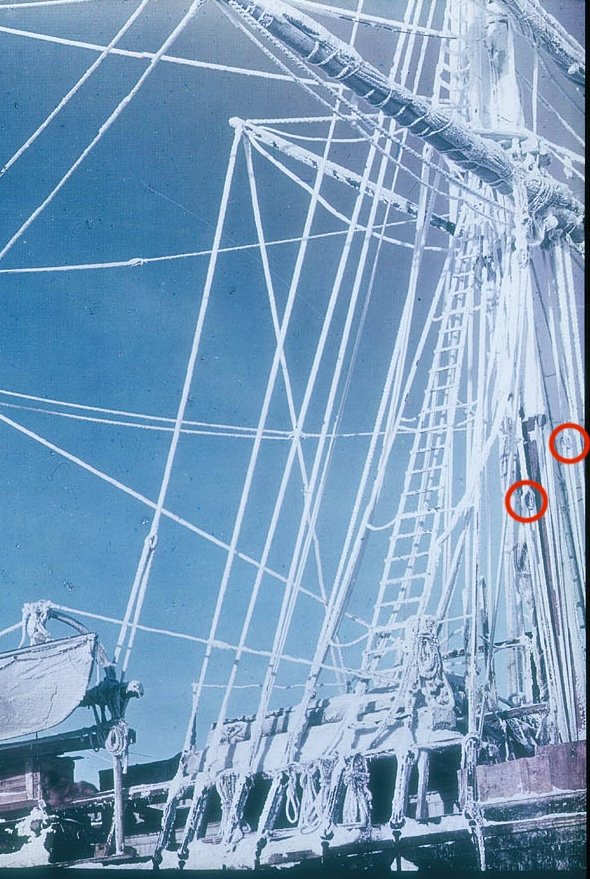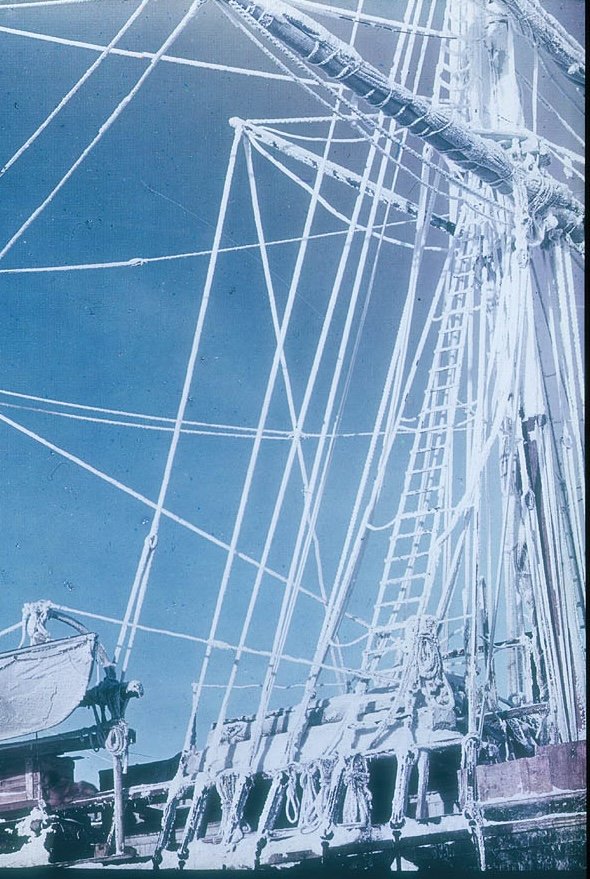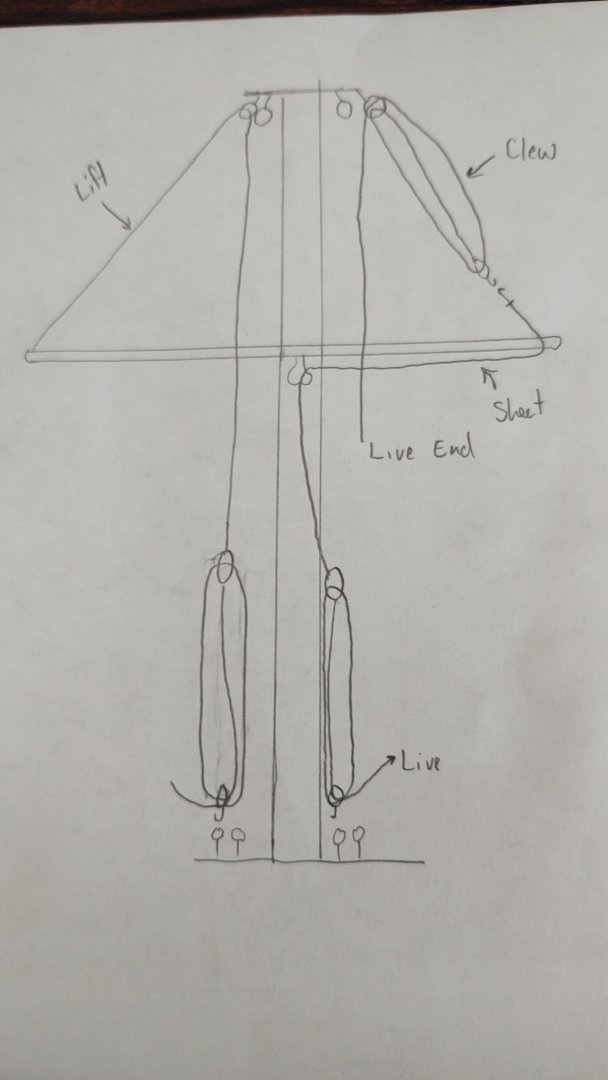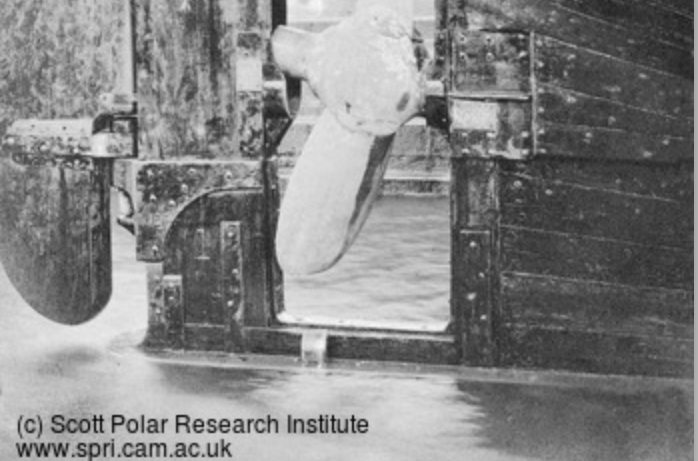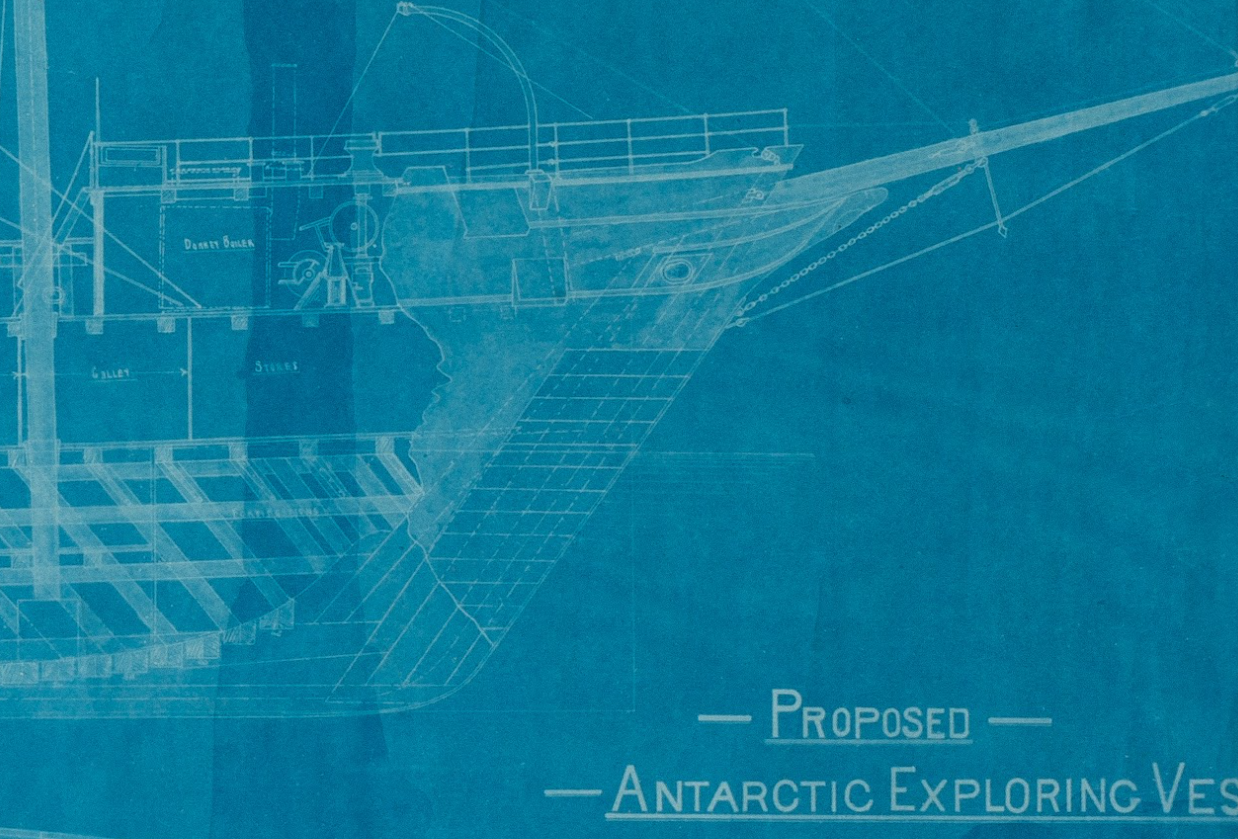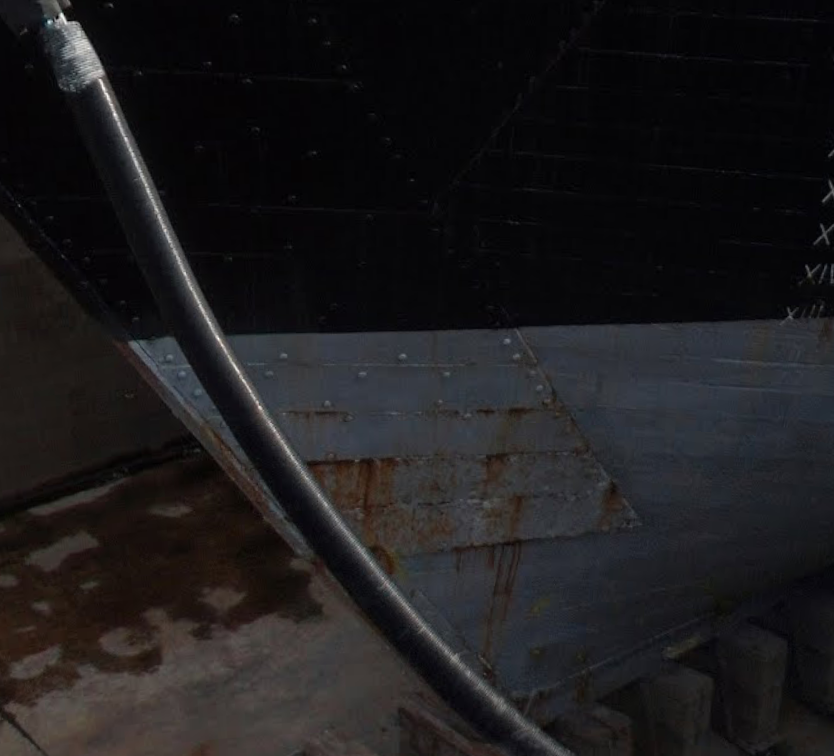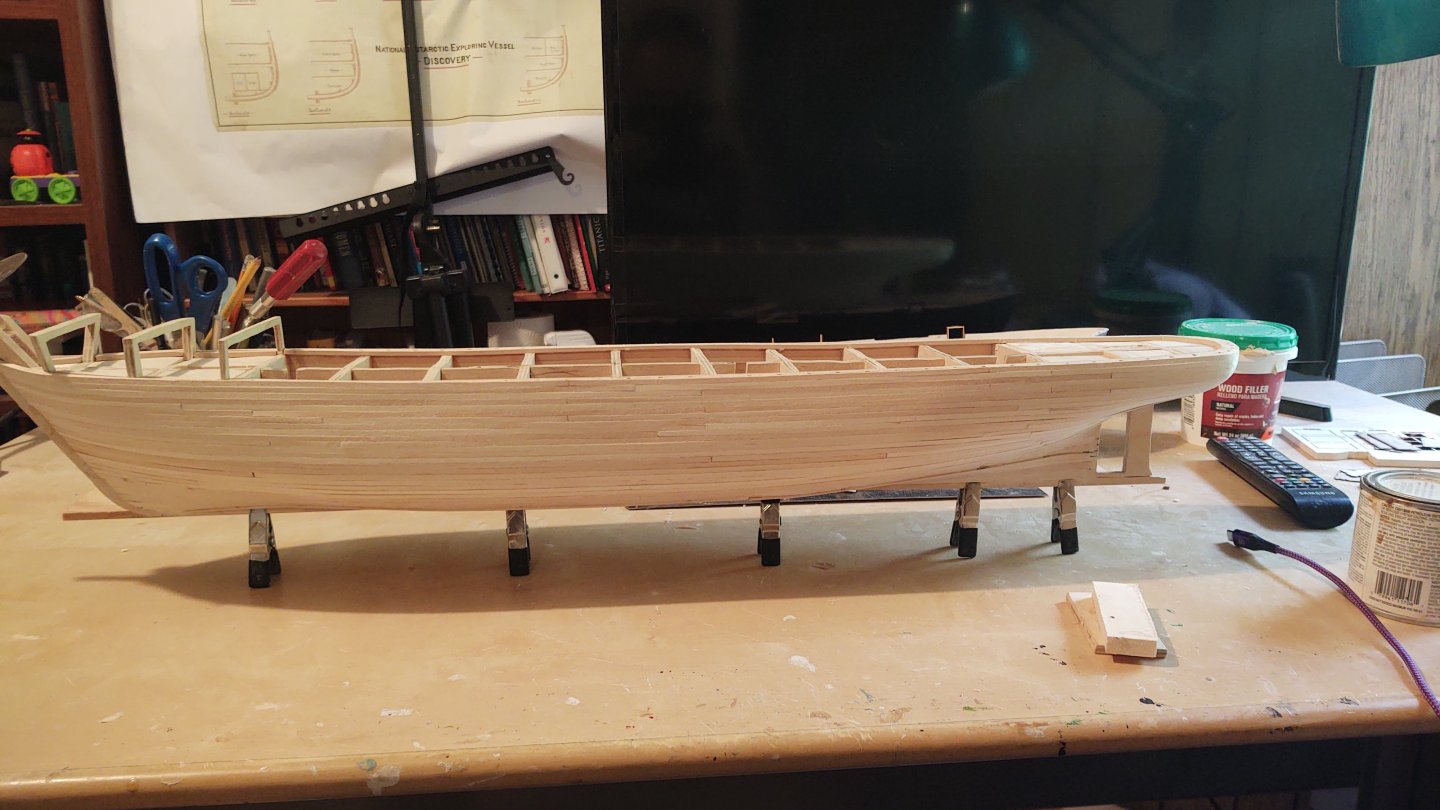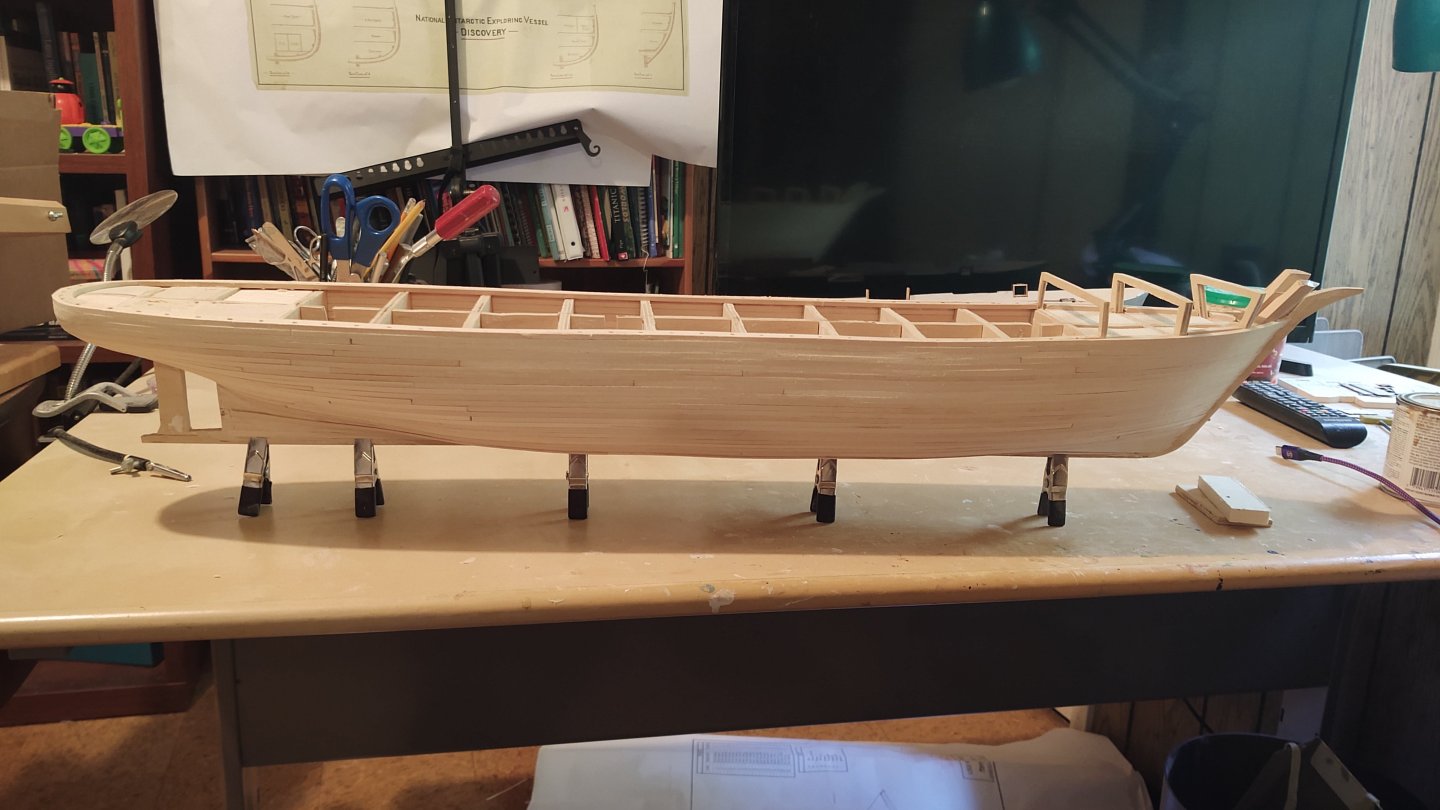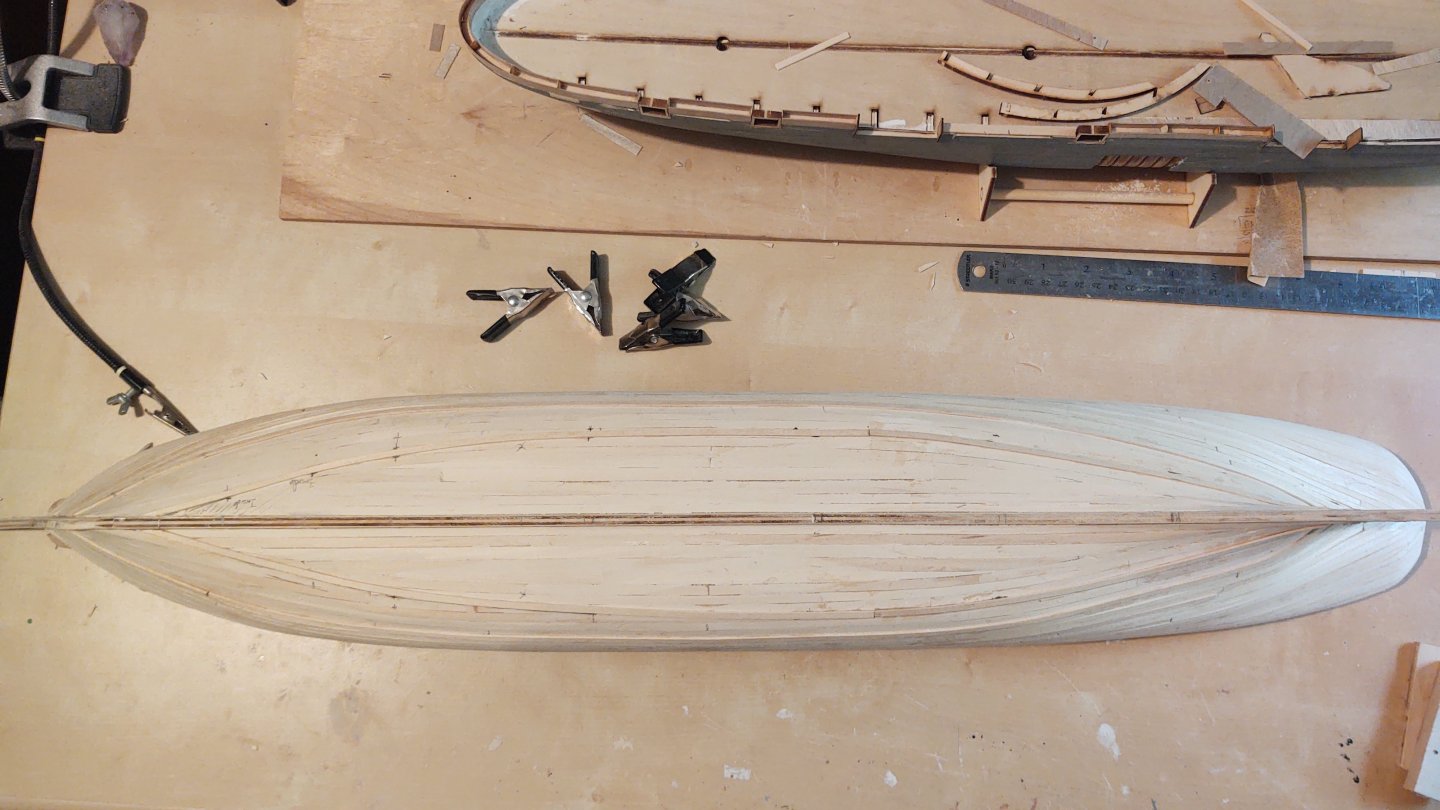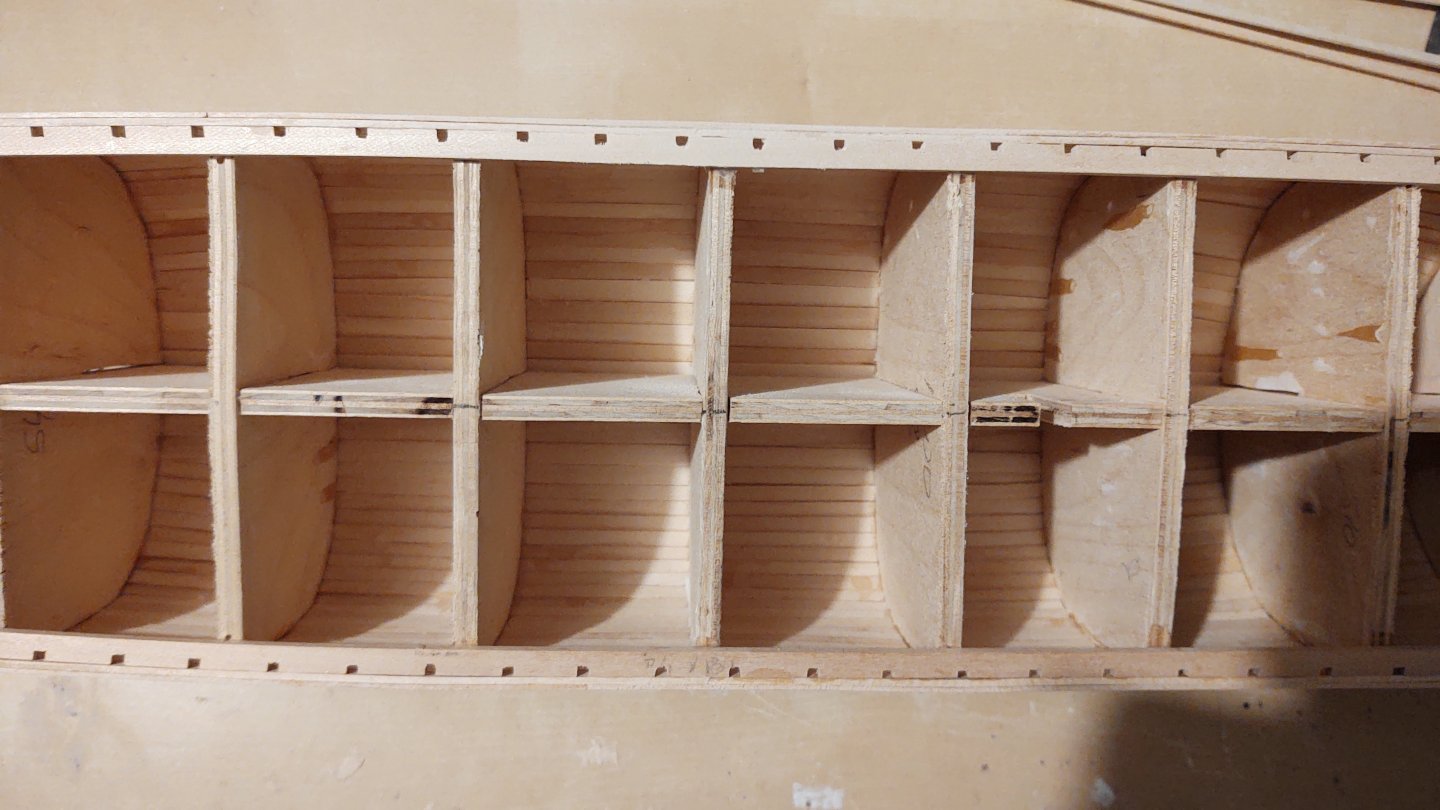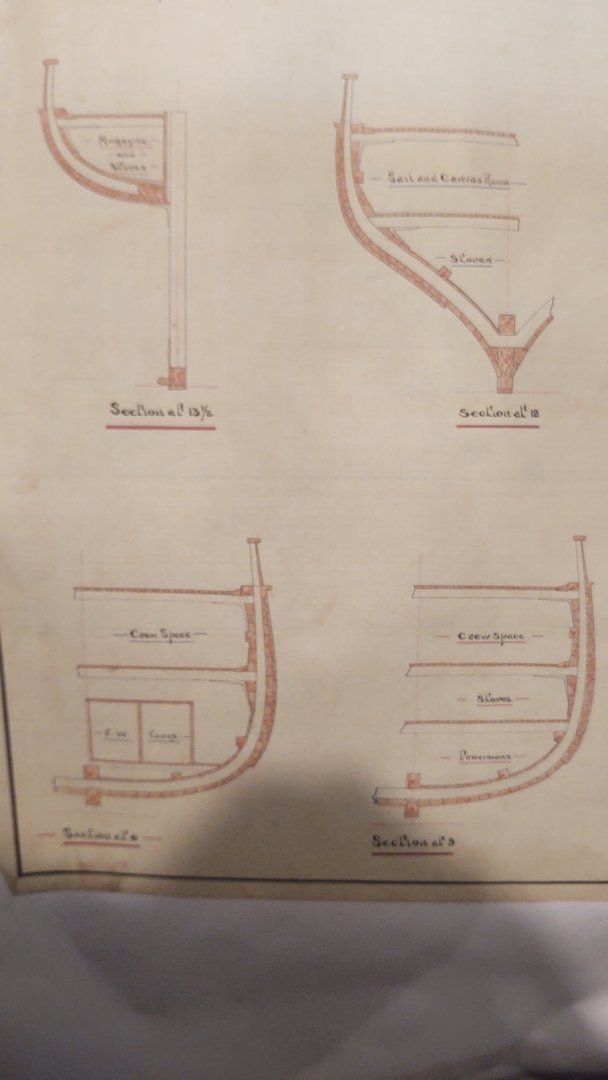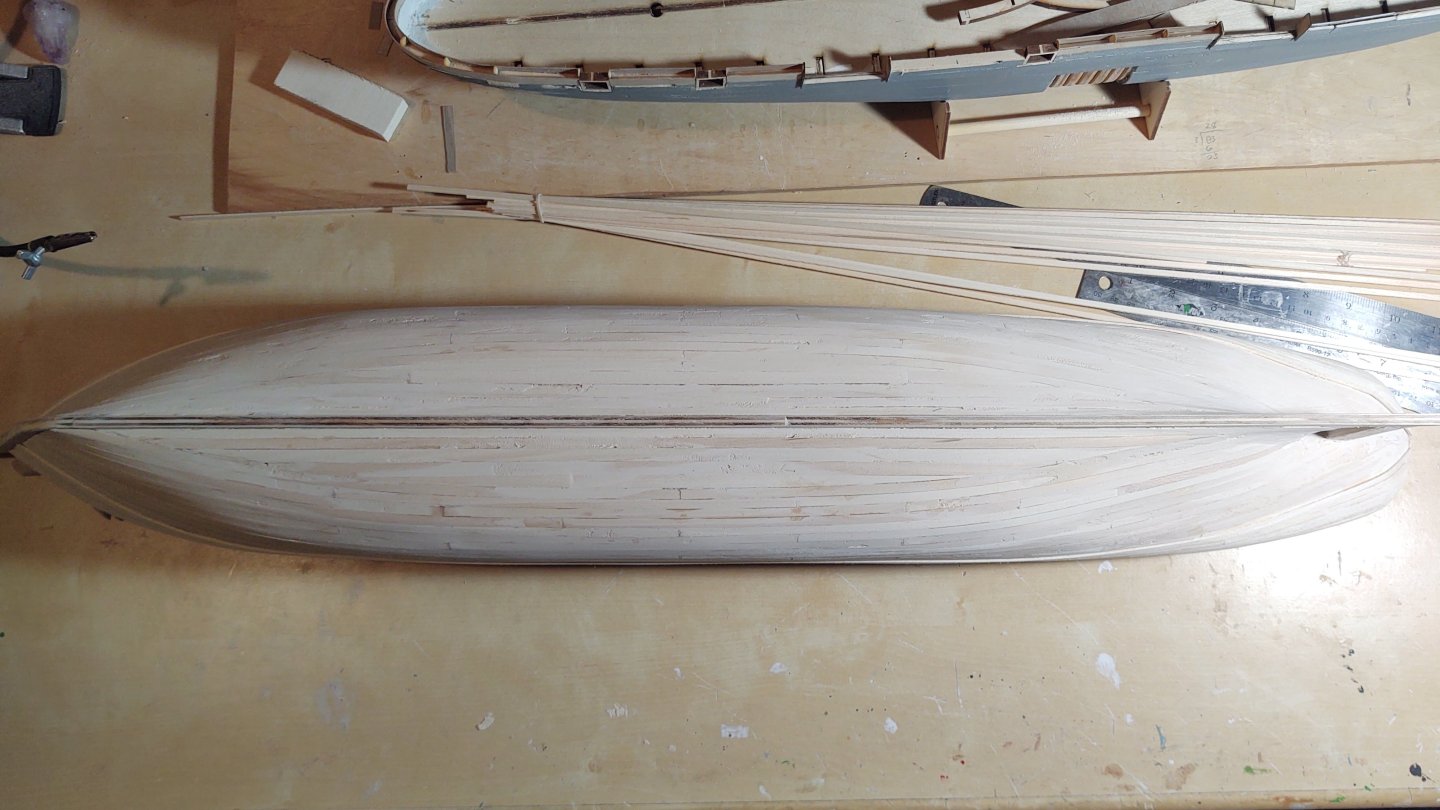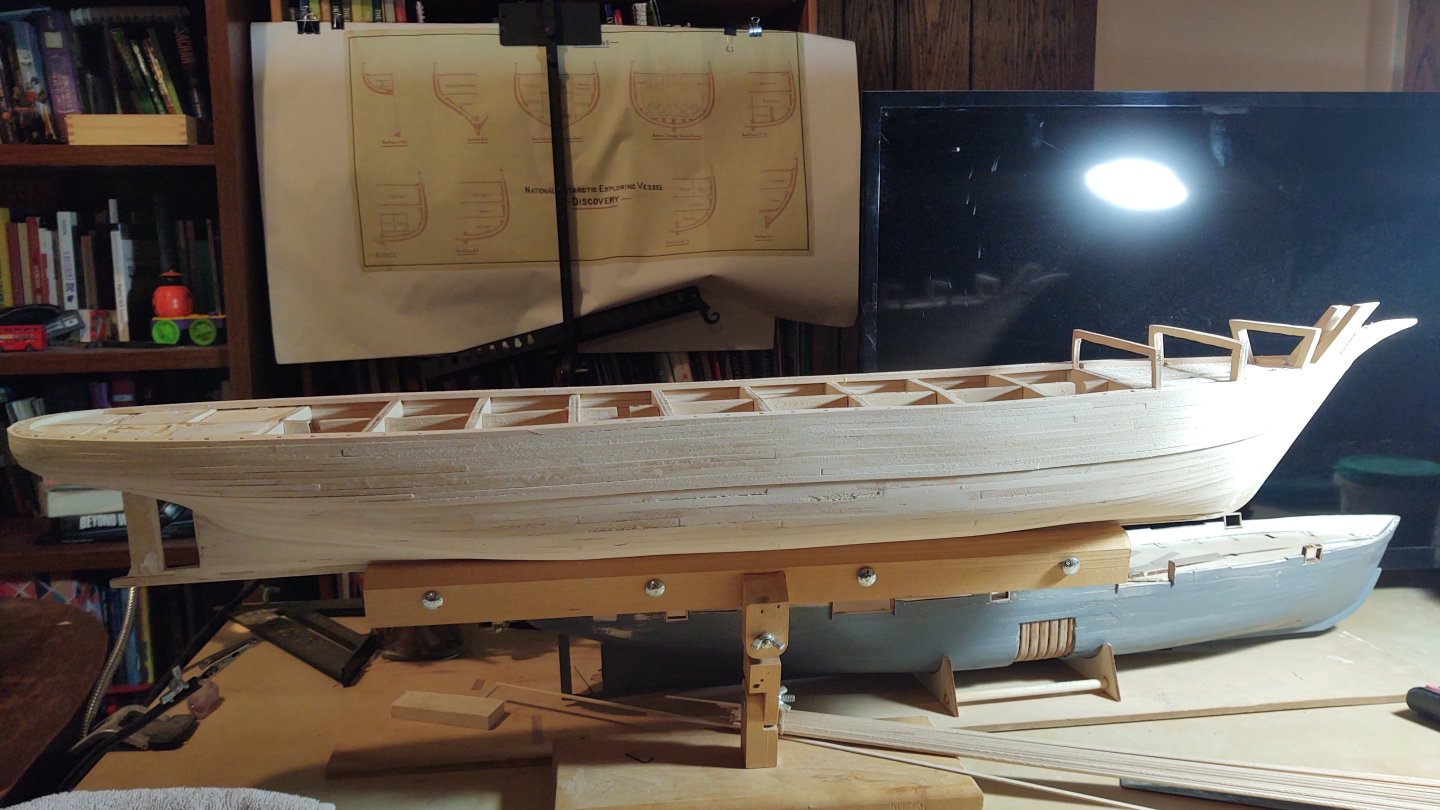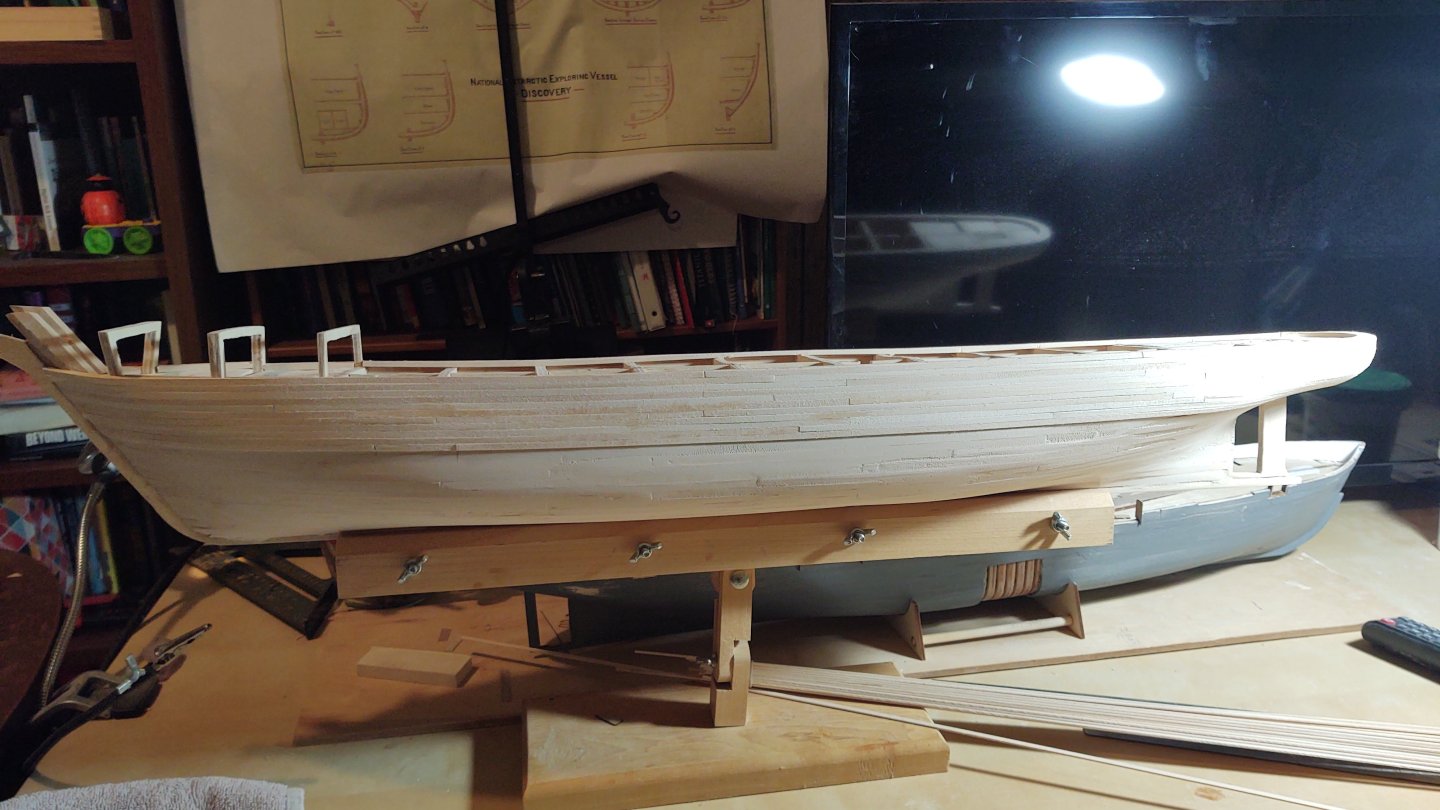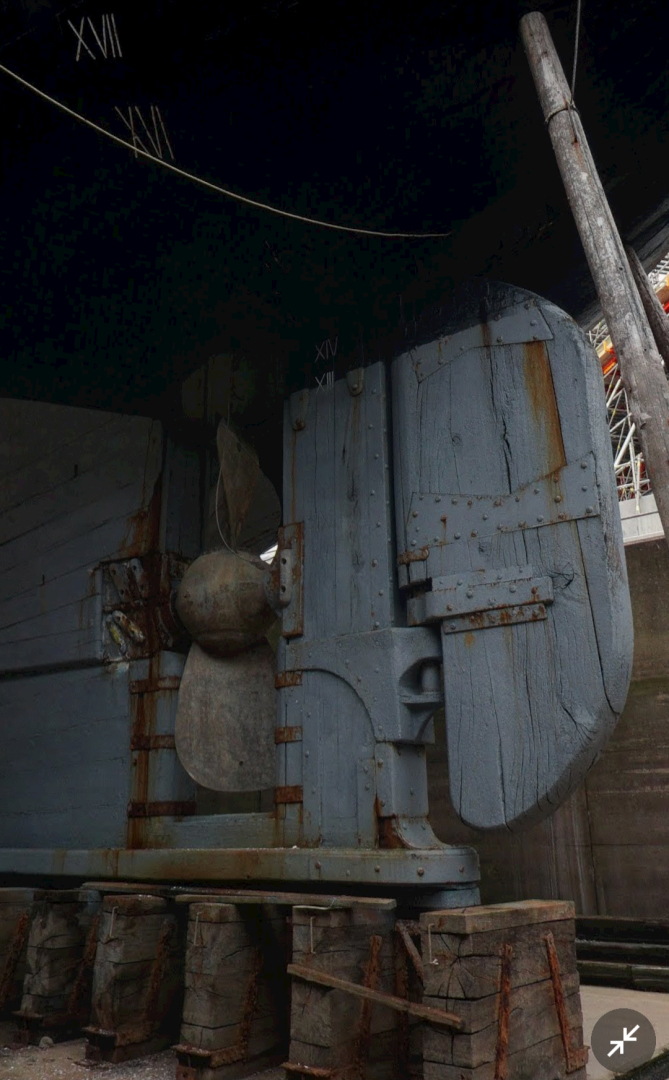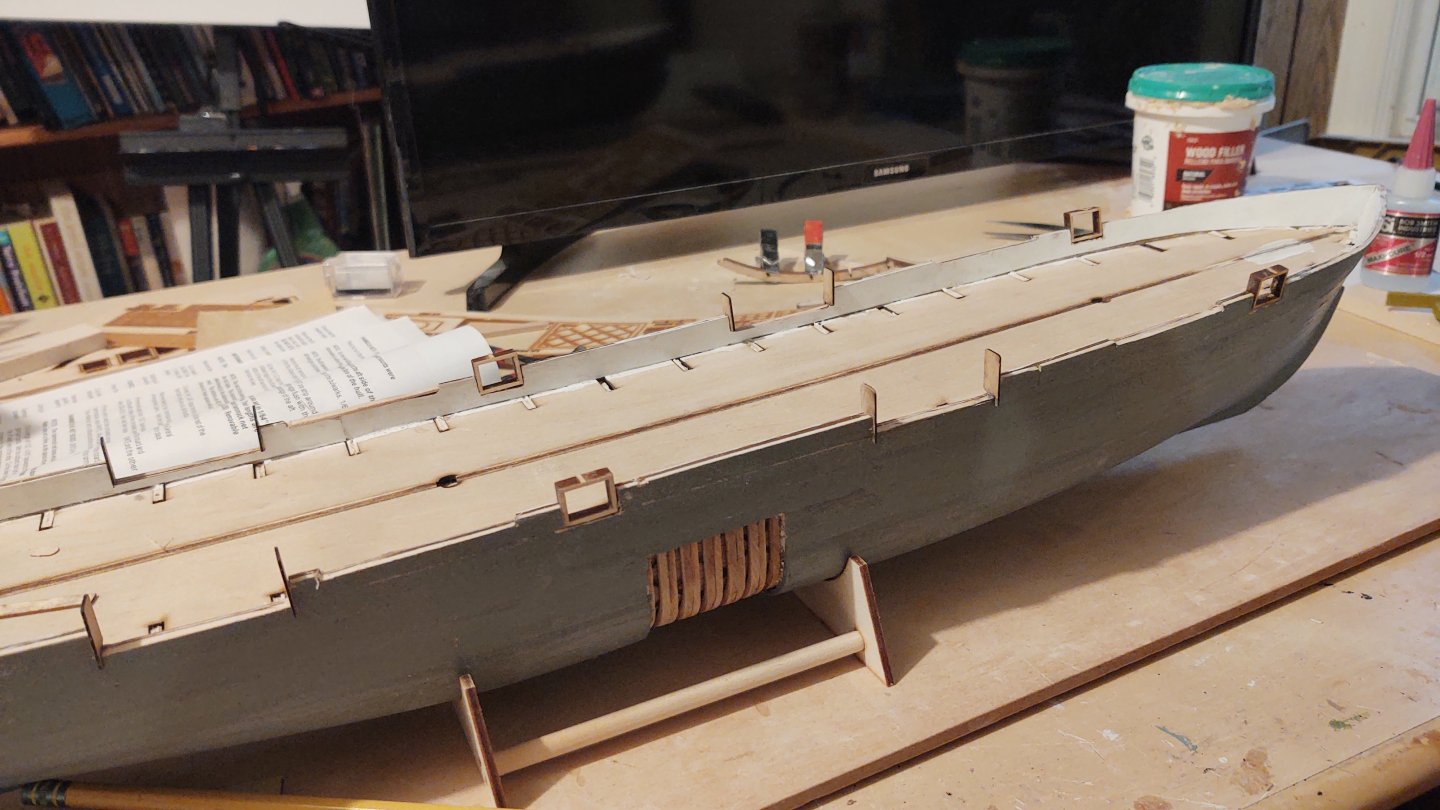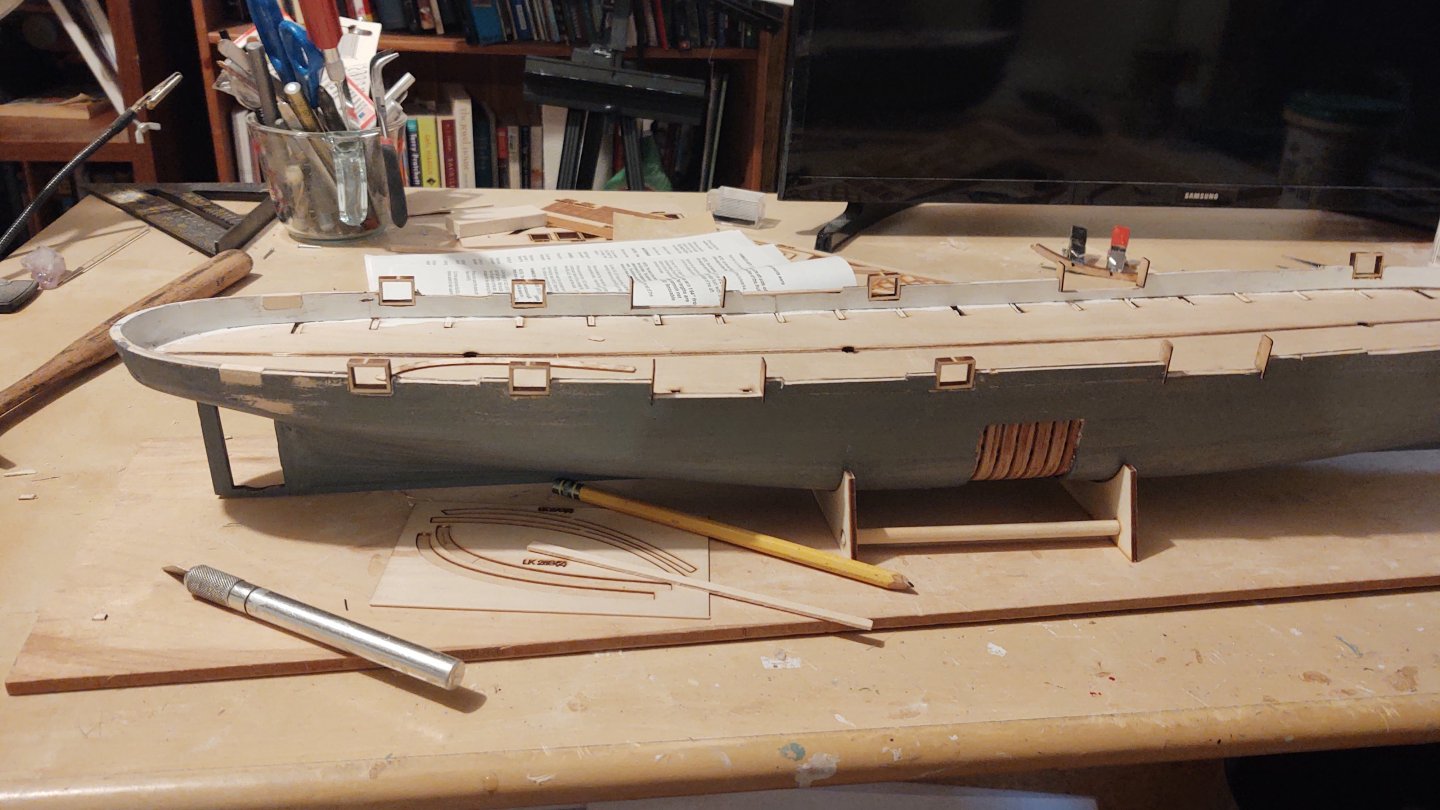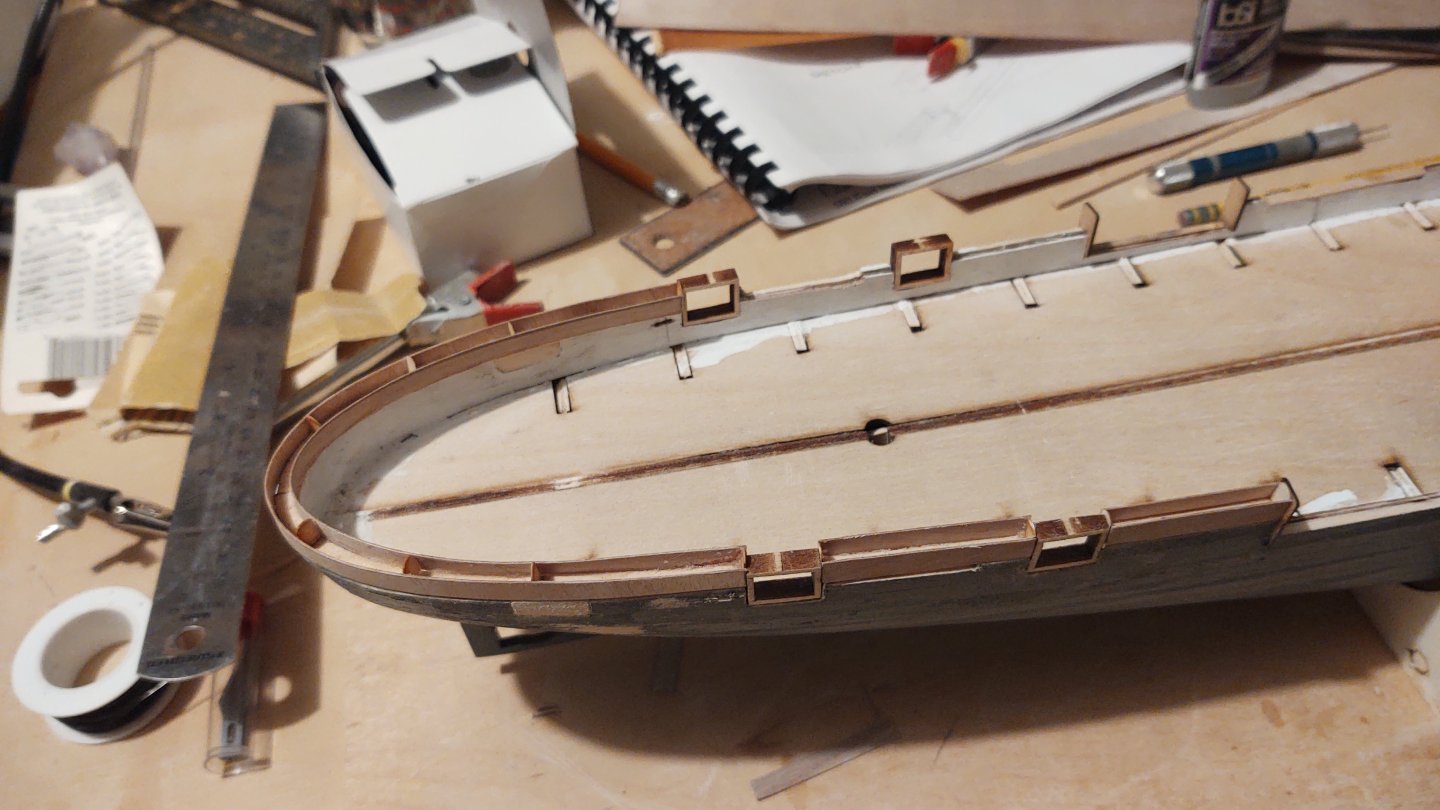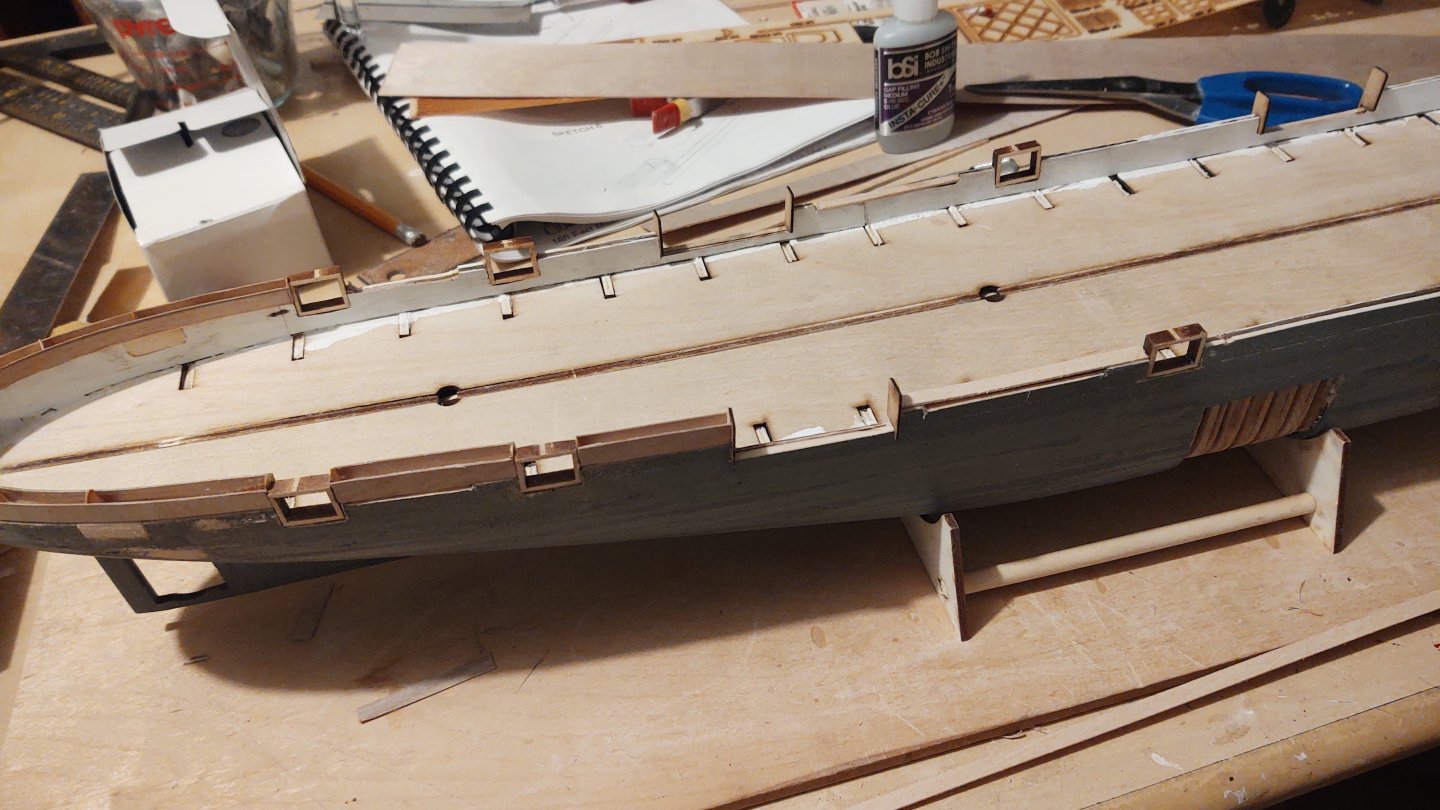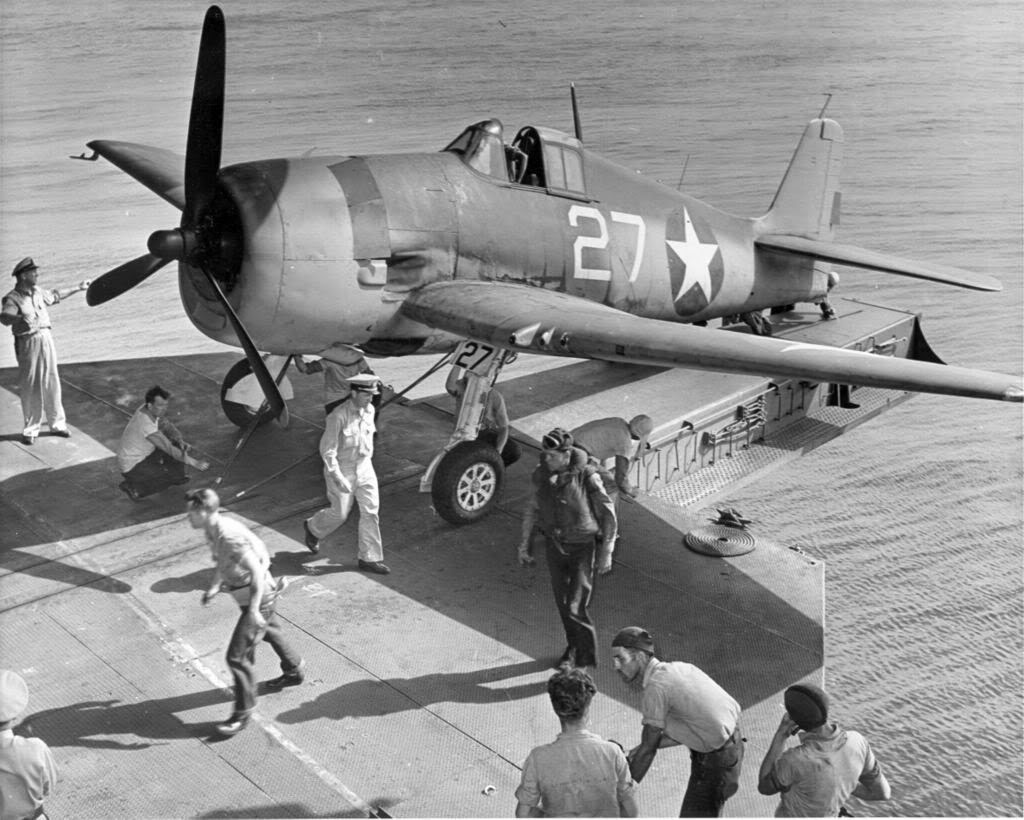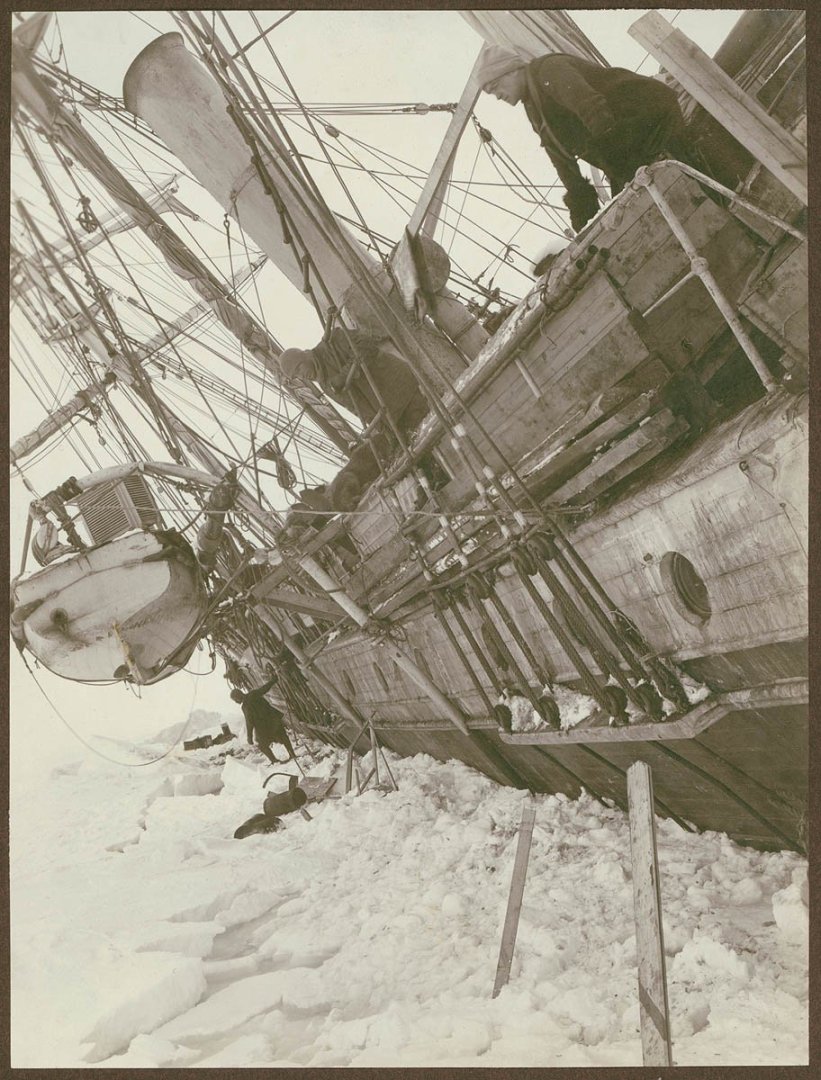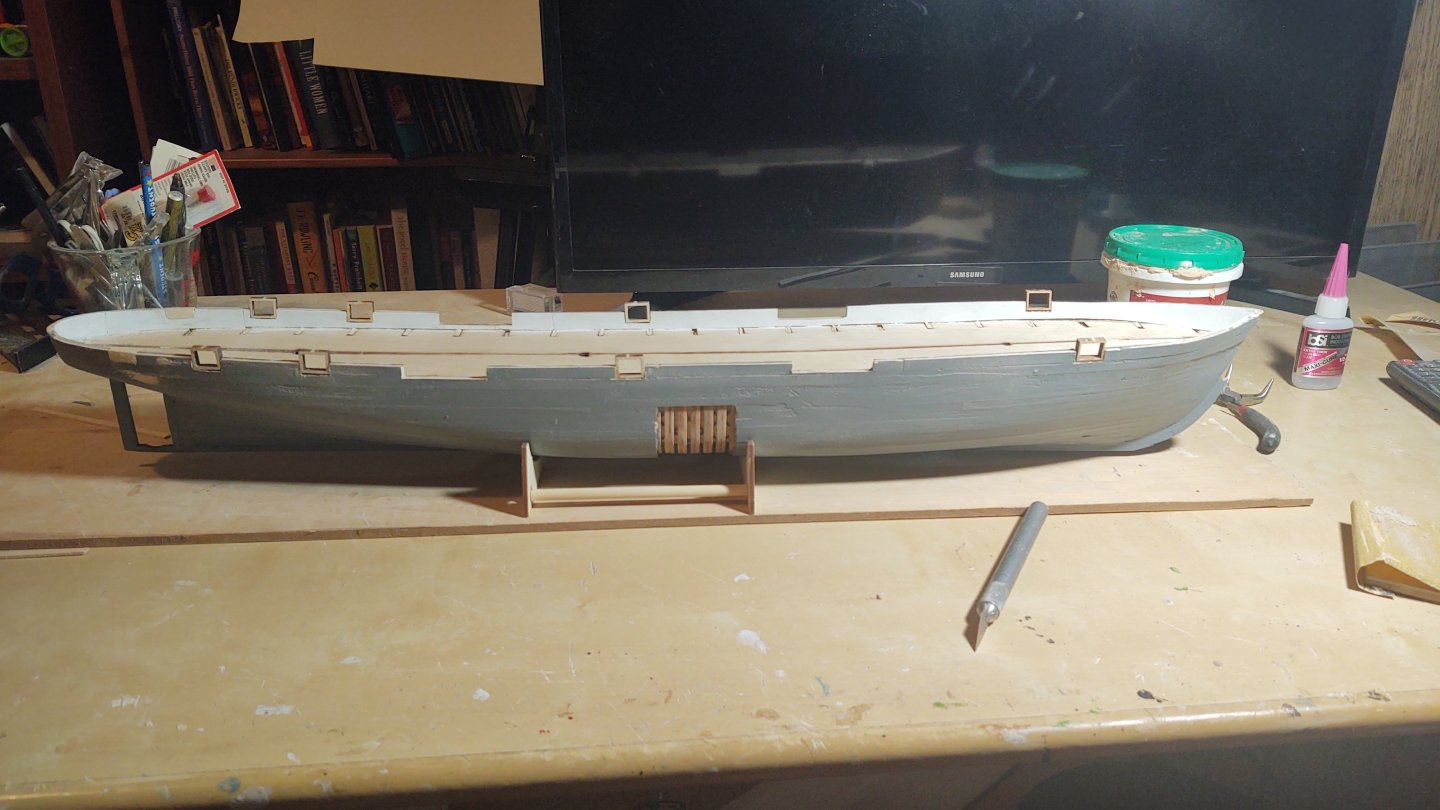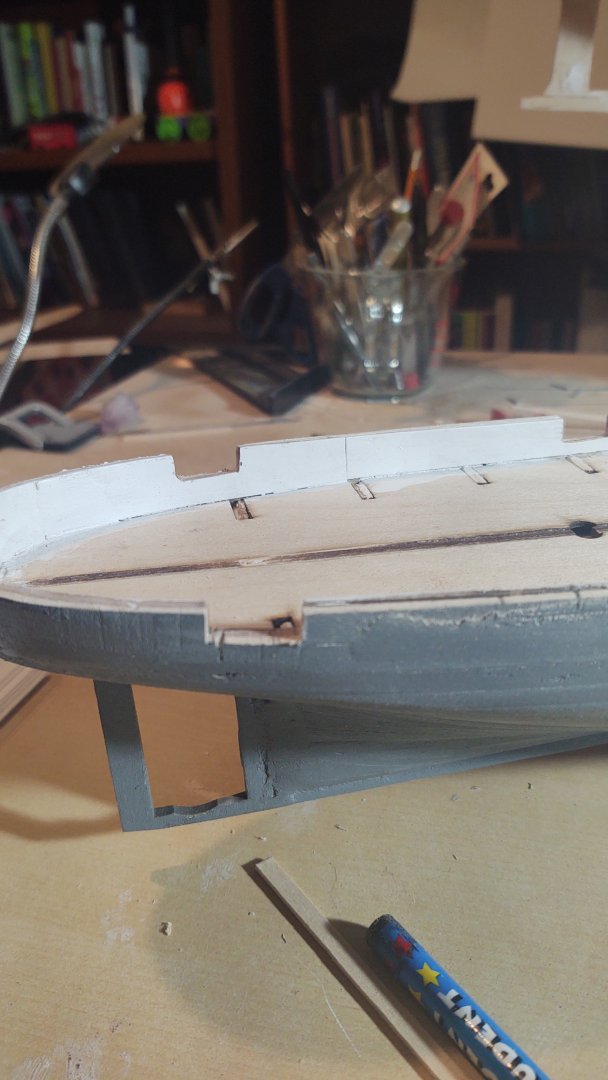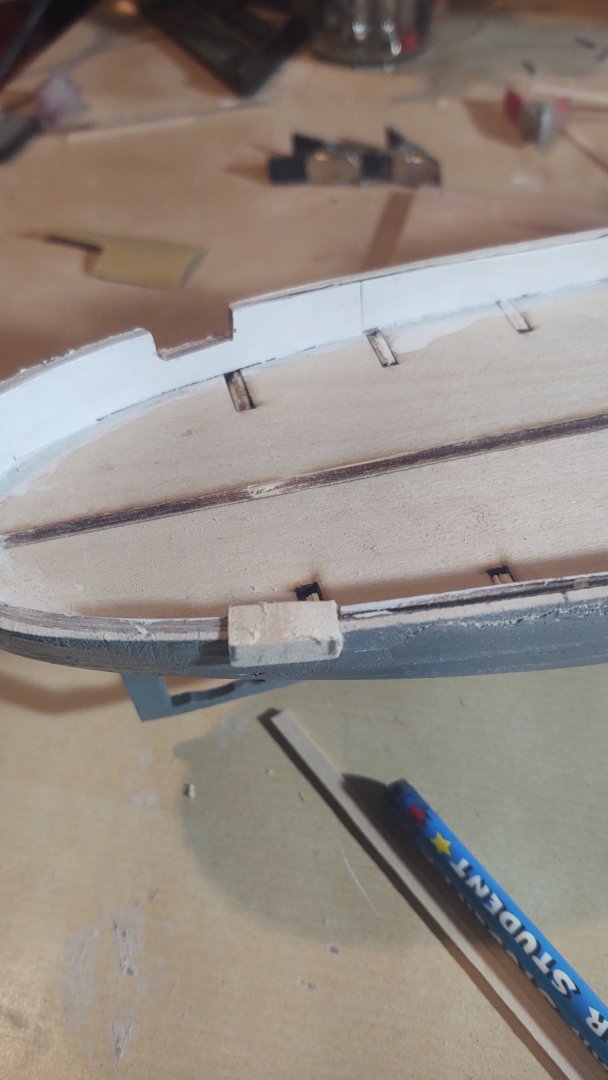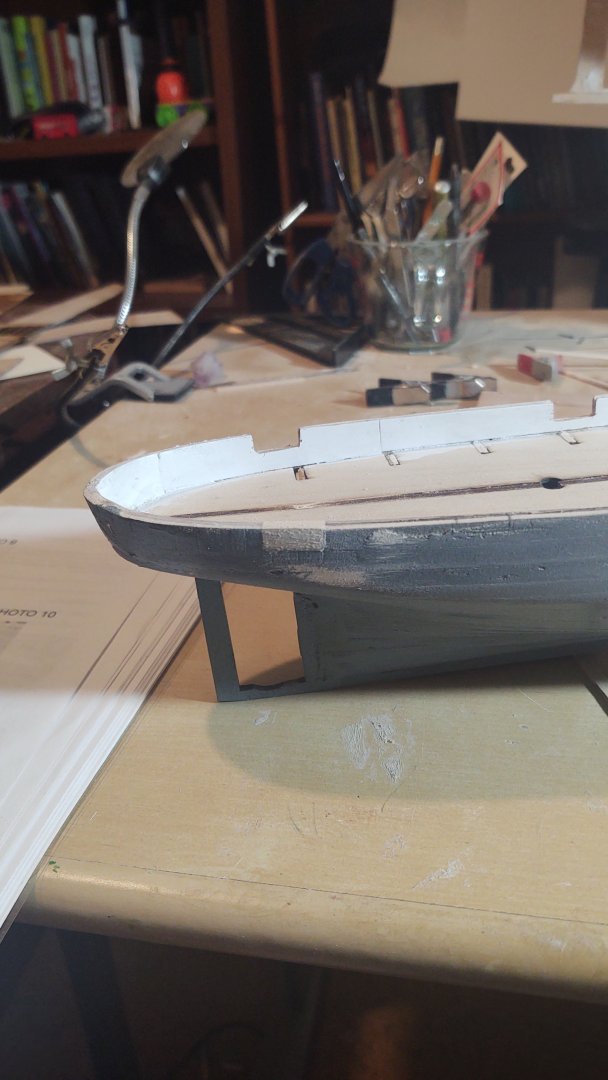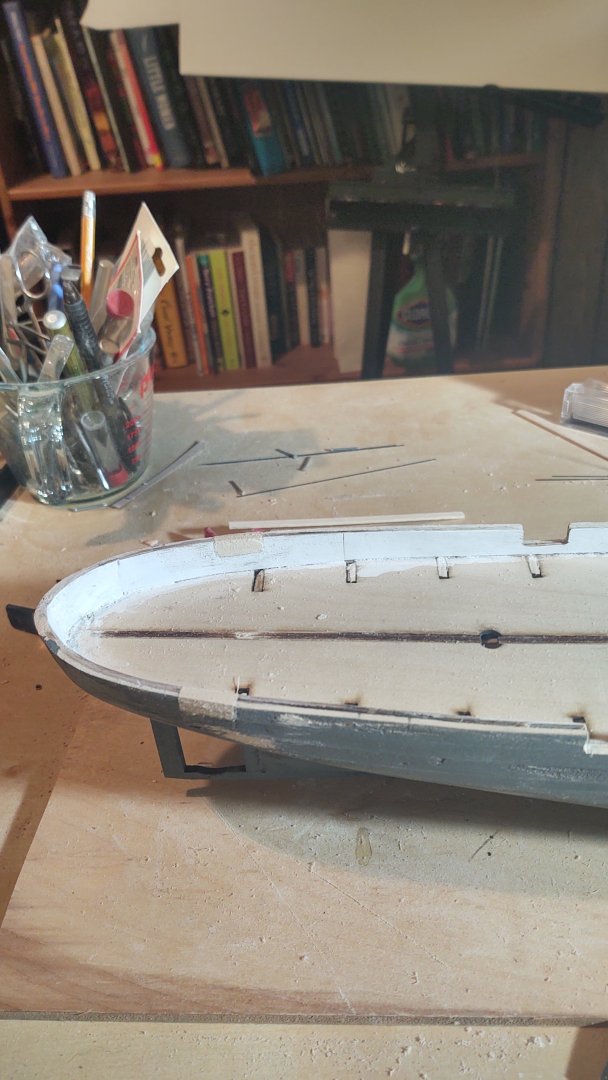-
Posts
715 -
Joined
-
Last visited
Content Type
Profiles
Forums
Gallery
Events
Everything posted by gak1965
-
Glad to be of service. Your Fish is really coming along great! Regards, George
- 602 replies
-
- Flying Fish
- Model Shipways
-
(and 2 more)
Tagged with:
-
Looking great. You are making real progress and fast! Regards, George
- 431 replies
-
- Flying Fish
- Model Shipways
-
(and 2 more)
Tagged with:
-
That could be. The ship is a bit odd in a bunch of ways because of its purpose/mission. For example, the foremast (which has the same size yards as the main) uses hemp rigging (and tied ratlines) vs. metal rigging for the main, presumably because they needed to keep iron away from the magnetic observatory which is aft of the foremast. Clearly there was iron/steel on the ship, but it would have been kept away from the observatory (supposedly the original wardroom upholstery had to be replaced with a version that didn't have metal buttons). If I understand, the primary biocides would have been copper based, but the primary source of color for red paint in those days was iron oxide. Add the copper and it changes the hue somewhat, but don't put in the red to avoid slathering the ship in iron oxide? It's an interesting problem. Regards, George PS - Picture of the foremast standing rigging:
-
The bulwarks are continuing apace (I will put some photos up when they are completed), and that has me thinking about one of the big questions about the hull - namely, what color is it below the waterline. But first, I was in Philadelphia on Monday moving one of my kids from a horror of an apartment to a much nicer one. We went out to the Ikea on Christopher Columbus Way to buy her a small table, when I was very surprised to see the SS United States. Probably for the last time before she goes to Florida to become an artificial reef. It's sad to see her go, but off hand, I'm not sure that anyone has the money to really save her. The funny thing is that the ship seemed small, which it is not (I mean the ship is 990 feet overall with a beam of 101.5 feet, and a height of 144 feet from standard load water line to funnel. But compared even to the smaller modern cruise ships (we took a trip on the Holland America ship Konigsdam in 2017) the Big U doesn't have the same amount of bulk. I'm not complaining - her lines are fabulous, but it's still something of a surprise at the difference. Anyway, on to the color below the waterline. The historian at Discovery Cove in Dundee responded to my inquiry, but if the color was recorded, they don't know where. I've been looking for something akin to Duncan McLean's Boston Daily Atlas (there do seem to be a small number of digitized newspapers from Dundee, and perhaps someone mentioned it in a news story about the launching). The historian did however point me to a collection of construction and launching photos (https://www.dhtcollections.com/item/Brand_SYDiscoverybuildandlaunch_0_0_26347_74.html). They are, of course, black and white and more than a bit ambiguous. Here are some of the key photos (or more accurately portions of them). Launch day: Another view of launch day: In the water: When I look at these photos, I'm just not seeing any obvious indications that the bottom was anything but the same color as the rest of the hull - black. Now here are two post-launch photos of Discovery in drydock: and one from Australia: and one from Dundee: The photos from Dundee seem to show a different color at the highest Plimsol line, although the modern ship is not painted that high. The ship had (has) metal ice breaking material on the bow - could that be what is the slightly different color up to the upper Plimsol mark? As to the bow on picture in drydock - could that just be salt (or wear) with the ship running at the standard load water line? I'm starting to think that the correct color is black. And I note that Endurance appears to also be painted black below the waterline as seen in this Paget color photograph by Frank Hurley: Any thoughts welcome. Regards, George
-
Jared, the stunsail booms were moved with tackles. I've seen pictures, but can't seem to find them now - if I figure out where I'll send you snaps. Needless to say, I didn't bother including them. Regards, George
- 431 replies
-
- Flying Fish
- Model Shipways
-
(and 2 more)
Tagged with:
-
I swear that this will be the last I say on the subject of measurement. But - if you haven't seen this, it's worth the five minutes: Now back to the ship. I found some extra wood in my stash and mostly finished the hull planking, so I hit the hull with some gray primer to see just how much sanding is required. Answer is definitely some. However, I'm going to do that one time after the bulwarks are in place, so that is the next step. On the ship in 2024, the planksheer and waterways are a dark brown, as are the bulwark stanchions with white bulwarks. In 1901 it seems like the bulwark stanchions were white, with a planksheer and waterway that were the color of the rails. If you look below the lashed poles in this photo you'll see the waterway: And here is a photo of a stanchion: Given this, my inclination is to paint the planksheer, the interior of the bulwarks, and and the bulwark stanchions prior to installation and then painting the exterior of the hull. My initial thought was to stain the planksheer, but that was not a huge success. Even with pre-treating it, it was very blotchy, and I think that the problem was that I got glue on the wood during the installation of the planks. I tried sanding it a bit, but no dice. In the end, I found some paint of a similar color to the oak stain I'm going to use on the covering board, and said time to move on. Next step was to make 77 stanchions. 75 of them are 3/32 in square boxwood, painted white on 3 sides (the final side is left unpainted to adhere better), cut to a length of 1 inch, with a mark on the unpainted side 1/16" from the bottom, and 2 are just 1/2 inch longer. Similarly, I took 1/32 by 1/8 basswood strips, and painted one side white; these would be the bulwarks. I then installed them into the pre-cut holes in the planksheer. Most of Discovery's bulwarks are pretty vertical - I made a little jig to help with the locations that are not. This yielded an arrangement like so: I then started mounting the basswood strips, using the stanchions to define the curve of the bulwark. Once I reached the height that I was aiming for (in this case 5/8" or 45 inches at scale, I clipped off the top of the stanchion. Here it is from the outside. And from the inside: Once the bulwarks are done, and the hull sanded, I can mask off the bulwark tops and paint the outside. And this way, I don't have a lot of spillage of the bulwark planks on the planksheer. Anyways, I think in a couple of weeks, I will be able to paint the exterior and it will start looking more like a proper vessel. As always, thanks for looking in. Regards, George
-
Hi Tom, Here is what I mean by deck mounted tackles. If you look at this photo of Endurance (best I could find on a quick search that shows it) and have a look at the blocks that I circled, those appear to be the tackles for the main course sheets and lifts. Here is the same photo without the circles. On the Fish (and based on photos on Discovery as well), those tackles are set up like so (pardon my terrible drawing): So the live ends of the course lifts and sheets are a double block (the circled ones in the photo). The block has the static end of another line that is run through a block on the deck near the mast, back through the first block and then down to the deck mounted block with the live end now available for belaying. This makes it much easier to operate the lines - and the course yards and sheets are going to be the most massive and hardest to move. Rigged like this, it makes complete sense to belay on either a fife rail around the base of the mast (which I gather is not present on Endurance) or on the spider band. Anyway, the model may not have planned for such tackle, which is fine, all models are simplifications. Either way, yours is looking great! Regards, George
- 205 replies
-
- Endurance
- Shackleton
-
(and 2 more)
Tagged with:
-
Looks like it might vary. Both Anatomy of the Ship for USS Constitution, and if you look here: https://ussconstitutionmuseum.org/2023/08/07/main-mast-work-continues/, it seems like Connie has ratlines all the way to the top. Similarly, here is Niagara (from FLIKR) That kind of makes sense since the lubber's hole is pretty useless if you can't reach it with the ratlines. I wouldn't lose any sleep over them though - they will be next to invisible. Regards, George
- 431 replies
-
- Flying Fish
- Model Shipways
-
(and 2 more)
Tagged with:
-
Ain't that the truth. You need some number of base units, and I don't have an issue with the meter, the liter is 1000 cm3, the second and volt were pretty much universal. But this proliferation of named units that don't tell you what they are measuring: webers, grays, bequerels, sieverts, grays, teslas, etc., etc drive me nuts. I mean I know what they measure because I remember some of my physics,, but I would have to look them up to see how they mapped to base units to use them mathematically (not that this has been much of a problem since I took physical chemistry in grad school, but still). And with that I will ask those annoying neighbor kids to get off of my lawn, and move on. Regards, George
-
Well, there's the fact that it looks great! The holes in the top are fairleads, and that is their purpose on the ship (basically keep the lines from fouling each other). Whether the main spar lifts were meant to go through the fairleads or through the lubber's hole is specific to your ship, and I have no insight there. Earlier you mentioned not worrying too much about where to put the lines. I agree with that assessment - most belaying plans are at best recommendations - ship captain's (and crews) belayed where it was convenient. if you look at generic belaying plans, things like the course spar lifts, course clew garnet, course and topgallant sheets tended to be belayed by the mast. This makes sense since they were often operated with tackles that were mounted to the deck near the mast, and who wants to run the live end of a deck mounted tackle to the bulwarks. I don't know if you have such a tackle on Endurance but there is on Discovery and there is a certain logic to such an arrangement. Your mileage may vary. Regardless, looking fabulous. Regards, George
- 205 replies
-
- Endurance
- Shackleton
-
(and 2 more)
Tagged with:
-
George, I took a look and yes indeed Flying Fish is recorded as having 8250 "yards" of canvas, but as canvas came in I believe 3-foot wide "bolts" to be sewn together into a sail, each "yard" of a yard-wide bolt is in fact one square yard. Vastly larger than Discovery's sail area Ah, that makes sense, it's the length of a standard bolt! Following your lead, I see here: https://textileranger.com/2017/12/05/a-compendium-of-sail-information/, that "Standards for British manufactured sailcloth were enacted in 1746. In addition to requiring British sail makers to mark each new sail with his name and address, the size of a bolt of sailcloth was standardized at twenty-four inches wide by thirty-eight yards long", and Wikipedia says 23 inches wide in the US and 24 in Britain. Still that gives us a range of: 23 inch yards: 8250 'yards'*1.958 ft/"yards"*3 = 48,468.75 sq ft. 24 inch yards: 8250 'yards'*2.0 ft/"yards"*3 = 49,500 sq. ft 36 inch yards: 8250 'yards'*3.0 ft/"yards"*3 = 74,250 sq. ft. As you say - VASTLY larger, 4x at a miniumm. An acre is 43,560 sq. ft. so the Fish had more than acre of sale at even the lowest size bolt. I wonder how many acres of cotton or flax would be needed to make that much cloth. Amazing. Regards, GAK
-
Thanks Rick! Ian, I took a look at Fram. Every time I read about these expeditions, I have a flashback to Butch Cassidy and the Sundance Kid - "Who are these guys"? That is one tiny ship to be taking on an expedition to the South Pole - 128 feet. Discovery is half again as long and carried three times the crew. Amazing. I will note that there is also an MS Fram that does cruises to polar regions and a SpaceX mission called Fram that is due to launch this year and have a polar orbit. So, an update. I've made some progress installing the second set of planking, but realized that I didn't order quite enough of the correct size of wood, so I will need to order a bit more. As can be seen in the photos of my last entry, the second planking does not cover the totality of the ship's hull. For example, it runs to the bottom of the propeller shaft as can be seen on this excerpt of a photo from the Scott Polar Research Institute (original here: https://www.spri.cam.ac.uk/picturelibrary/catalogue/article/p83.6.2.3.2/) At the bow, the ship is double planked at least to station 3 on the plans, which makes sense as there is an iron ice breaker attached (this is courtesy of a document sent to me by the Discovery Cove Museum in Dundee: Or this close up (source Google Maps - full photo credited to Open Virtual Worlds) As I mentioned, when I plotted the cutoff points using the sections, it produced a lower line that did not correspond with the photos as shown, so I did my best to come to terms with the variation in a fashion that would seem to make sense and produce a reasonable looking result. This yielded the following lower limit on the double planking, as seen from the above: You can see where the double planking isn't complete, but it shouldn't take a ton more lumber. Here is the ship from both sides. I haven't really sanded it yet - will do that once the double bottom is done. In the interim, here she is from both port and starboard: It's amazing how much neater the second planking goes on - get a solid surface, and thinner stock and things go on really easily. I will put the bulwarks in while I'm waiting for the rest of the wood. One question for the experts out there. This is a barque with a 450 hp steam engine. She carries 3 masts, 2 square rigged, each with a course, split topsails, and a topgallant (so 4 yards per mast) and a fore-and-aft mizzen. Discovery has relatively narrow, non-built masts - much smaller in diameter to the massive built masts on my last ship, the Flying Fish. I was wondering about why they could get away with masts like that, and had speculated that a clipper like that would carry a lot more canvas (I mean the Fish had 3 square rigged masts with course, top, topgallant, royal, and skysails) plus all of the clipper extras (studding sails, ringtail, etc.). However, when I look up the size of their rigs, we find that the Fish carried "8250 yards of canvass [sic] in a single suit." The Discovery had a sail area (in 1901) of 12,296 sq ft. So, is the 8250 "yards" square yards, or is there some arcane convention that can be used to convert to square feet? Crothers goes into great detail on these ships about everything but their sail plans (which I realize changed a lot over time). Any help greatly appreciated. As always, thanks for looking in! Regards, George
-
Looking great! Fabulous brass work there. George
- 345 replies
-
- Flying Fish
- Model Shipways
-
(and 1 more)
Tagged with:
-
I'm also for the thinner thread. Also, FWIW, the line dimensions printed on the plans are circumference, not diameter. You may have already corrected for that, if so, my bad. I used boring, black, mercerized cotton sewing thread for my ratlines. Visible enough, but not too visible, and I found that it hung and tied better than the (I think polyester) line supplied by the kit. Regards, George
- 431 replies
-
- Flying Fish
- Model Shipways
-
(and 2 more)
Tagged with:
-
Thanks Bill. I find them to be interesting subjects as well, and Discovery seems to have been overshadowed by Endurance. Wisborough Green eh.... luckily for you, beyond telescope distance 🙂. Haywards Heath You gentlemen have now improved my geographical knowledge of Southern England by at least 2X, just by looking up the locations you reference! On to an update +which has been a while coming). The wood arrived for the next couple of steps. As I've mentioned, the Discovery has a double hull over portions of the ship. You can see it on this photo of the plans. The exact point where the double hull ends varies by frame (which makes these cross sections very useful), with the bow covered from sheer strake to keel (sensible since it has to break ice) but the stern only covered as far as the bottom of the prop shaft as seen here: I'm working on where to put the exact line for the bottom of the double hull, as the drawings and this photo seem a bit in contention, but we'll resolve. In the meantime I've started to put the upper strakes on: And to get the part of the ship that won't be double bulled to a decent finish. Once the double hull is in place, I will be adding a 1/16 square piece of wood to the top of the upper strakes, which will replicate the shape of the actual ship at that location. Then it will be the bulwarks. As you can see from this top photo, the planksheer has holes precut to accept 1/16" stanchions. The sections will drive the ange that they are inserted, and I have some thin (1/32") wood to make the bulwarks from. As always thanks for the encouragement and for looking in. Regards, George PS: @Kevin-the-lubber and @KeithAug, I will be in your part of the world in December. The admiral and I are taking the QM2 from Southampton to New York for our 60th birthdays.
-
Looking good Jared! I didn't bother with clove hitches, too much bulk, too hard to get the line to hang right. Simple overhand knot, using a piece of paper with the pattern behind the lines. Regards, George
- 431 replies
-
- Flying Fish
- Model Shipways
-
(and 2 more)
Tagged with:
-
Looking really great Rick! The chapeling may look different because of photo angles and/or paint. They certainly look great to me, and your yards are works of art. Regards, George
- 345 replies
-
- Flying Fish
- Model Shipways
-
(and 1 more)
Tagged with:
-
A bit of an update. The next steps were to cut the slots for the channels/pinrails and to install the sheaves aft of the final gunport, both of which are completed. In theory, the next step would be to put the deck down, and then installing the waterways. Unfortunately, if you do that, you wind up having to mask the entire deck during the painting process, which strikes me as odd. As a result, I decided that I would build the hammock nets and finish the basic hull and get all of the hull painting done before installing the main deck. Step 1 is to build the hammock netting, starting with the stern and moving forward. Based on the instructions and photos of the ship, the netting should be flush with the outer hull and extend slightly over the bulwarks on the inner side. The nominal interior width is 3/16 inches with 2 1/64 inch sidewalls for a total width of 7/32. In practice, the spacers/end pieces are slightly less than 3/16 so in every case I've needed to narrow the 3/16 wide bottom pieces to some degree or another. The instructions are clear that the rear nets in particular are vertical, and do not follow the flow of the bulwark outward. Progress so far as in the pictures below: In the picture below, you can see the sheave on the port side, and the slot on the starboard side for the aft channel/pinrail under the hammock netting between the gunports. I have to say that the ship (not the model, but the actual ship) seems strangely designed to me. The nominal height from the deck to the top of the hammock netting is about 6 feet, with the bottom opening of the gunport about 2 feet off the deck. That means that the bulwark height is only about 4 feet, with another 2 feet (1/4 inch at scale) of hammock netting. The bulwarks would have extensions of the ship's frames and two layers of planking to protect the crew, the hammock netting only has some thin planks and the bundled hammocks, which means that no one is particularly well protected. I would also note that the gunport frames extend above the bulwarks, without anything akin to a covering board or equivalent to provide additional strength. Perhaps the conclusion was that the guns of the day were so powerful there really wasn't meaningful protection to be offered (indeed using chain armor was key to the Kearsarge's success), but still, it feels kinda odd to me. Anyway, I'll be making these things for a little while, and will also put in the sally port ends before turning to the rest of the hull. Regards, George
-
Not sure which ship this is (Enterprise, Hornet, or Yorktown) but a good photo of the cross deck catapult. Carrier aviation is a specialist activity. Launching through the hanger is plain (hah!) insane.... Regards, George
-
Wow! How are you making these amazing parts? I gather you are a machinist, but still, wow! George
- 68 replies
-
- Coates
- Rudderow-class
-
(and 1 more)
Tagged with:
-
Hi Tom! I know that this is a month out of date, but your channels seem spot on vs. the directions. Here is a photo of Endurance that shows the channels and it is pretty clear you did it right Regards, George
- 205 replies
-
- Endurance
- Shackleton
-
(and 2 more)
Tagged with:
-
Well, a bit of an update. If you look carefully at the photos in my previous entry, you will notice that somehow I managed to put the aftmost gunport in the wrong place. It's way too far aft - I apparently misread the marks that I put on the bulwarks that indicated where it was supposed to go. 100% my goof. So, repairs commenced. I cut out a bit of wood, fitted it to the gap: Sanded to match the curves of the bulwarks: Rinse and repeat on the other side: Once the paint the hammock nets are in place, you'll never know it was there. Annoying, but completely on me. I've since cut the correct gunports, and mounted the 10 gunport frames. Thank goodness for having 10 to fill 8 slots, as two of them were destroyed sanding them down to the thickness of the bulwarks. The trick is to leave cut the center piece, but leave it in the frame as you sand. Put the pressure on the frame as much as possible so you don't have to sand down a solid piece of wood, but it keeps the pressure off the relatively delicate piece of wood that is the frame. As you might have guessed, the answer to my question above was to sand the frames to the thickness of the bulwarks, and I've pretty much concluded that the parts are just mislabelled as I mentioned. So, next step will be to add the frames for the large pivot guns, and then I think it's time to start cutting the slots for the channels and building gunport nettings. Thanks for looking in everyone! Regards, George
About us
Modelshipworld - Advancing Ship Modeling through Research
SSL Secured
Your security is important for us so this Website is SSL-Secured
NRG Mailing Address
Nautical Research Guild
237 South Lincoln Street
Westmont IL, 60559-1917
Model Ship World ® and the MSW logo are Registered Trademarks, and belong to the Nautical Research Guild (United States Patent and Trademark Office: No. 6,929,264 & No. 6,929,274, registered Dec. 20, 2022)
Helpful Links
About the NRG
If you enjoy building ship models that are historically accurate as well as beautiful, then The Nautical Research Guild (NRG) is just right for you.
The Guild is a non-profit educational organization whose mission is to “Advance Ship Modeling Through Research”. We provide support to our members in their efforts to raise the quality of their model ships.
The Nautical Research Guild has published our world-renowned quarterly magazine, The Nautical Research Journal, since 1955. The pages of the Journal are full of articles by accomplished ship modelers who show you how they create those exquisite details on their models, and by maritime historians who show you the correct details to build. The Journal is available in both print and digital editions. Go to the NRG web site (www.thenrg.org) to download a complimentary digital copy of the Journal. The NRG also publishes plan sets, books and compilations of back issues of the Journal and the former Ships in Scale and Model Ship Builder magazines.


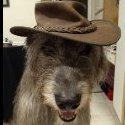

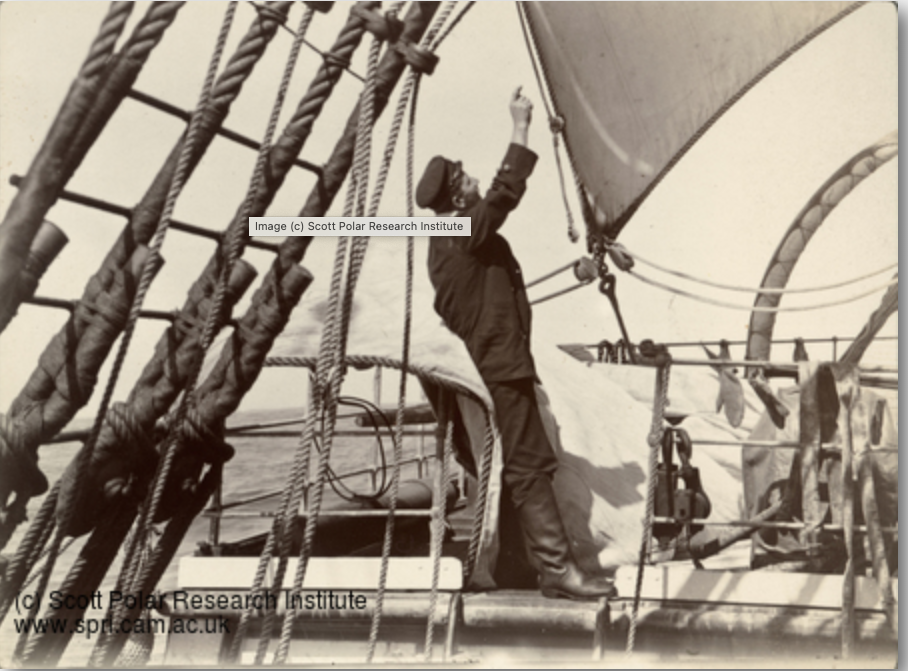
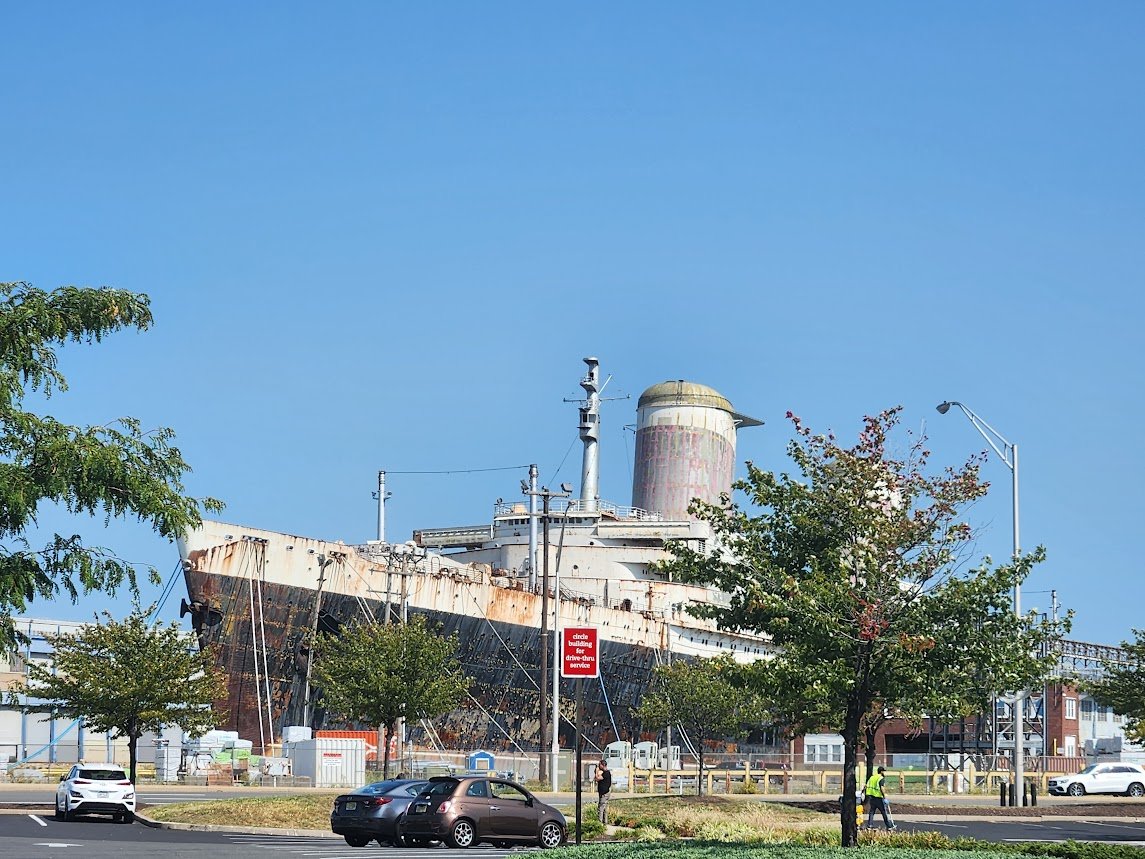
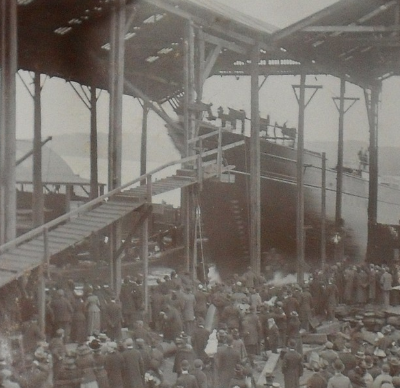
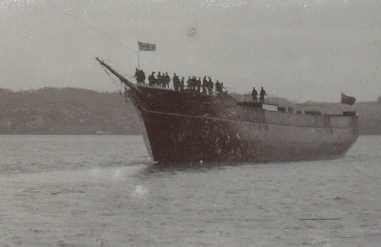
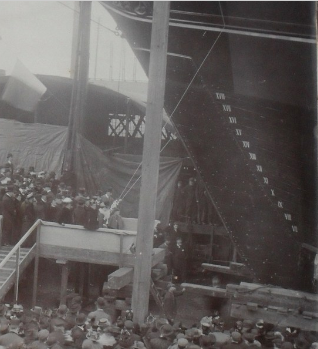
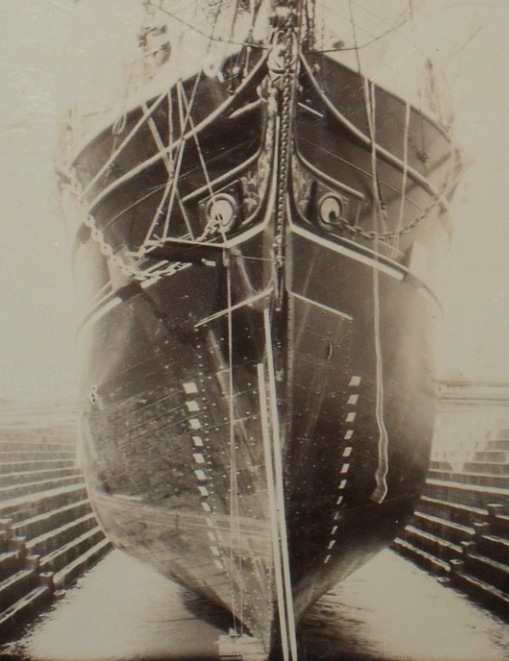
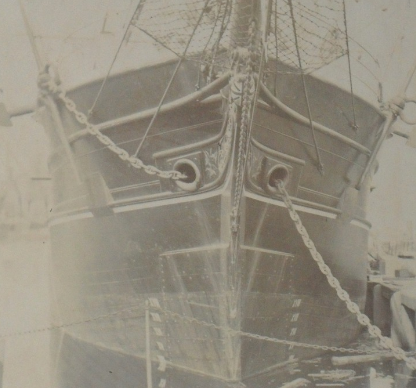
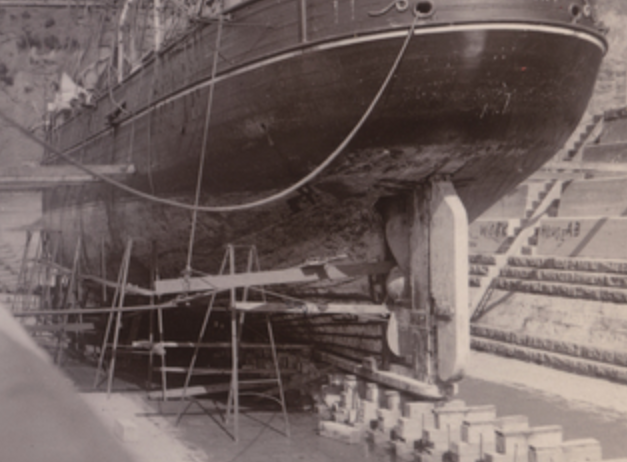
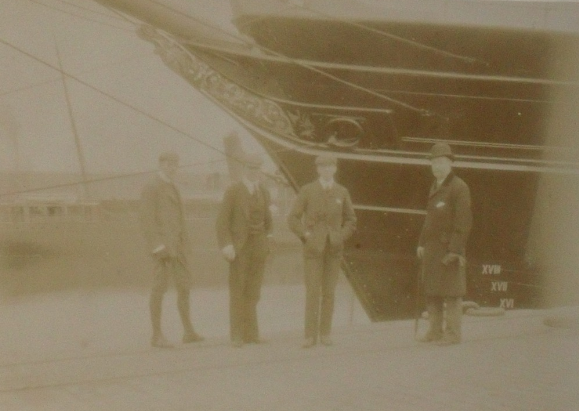
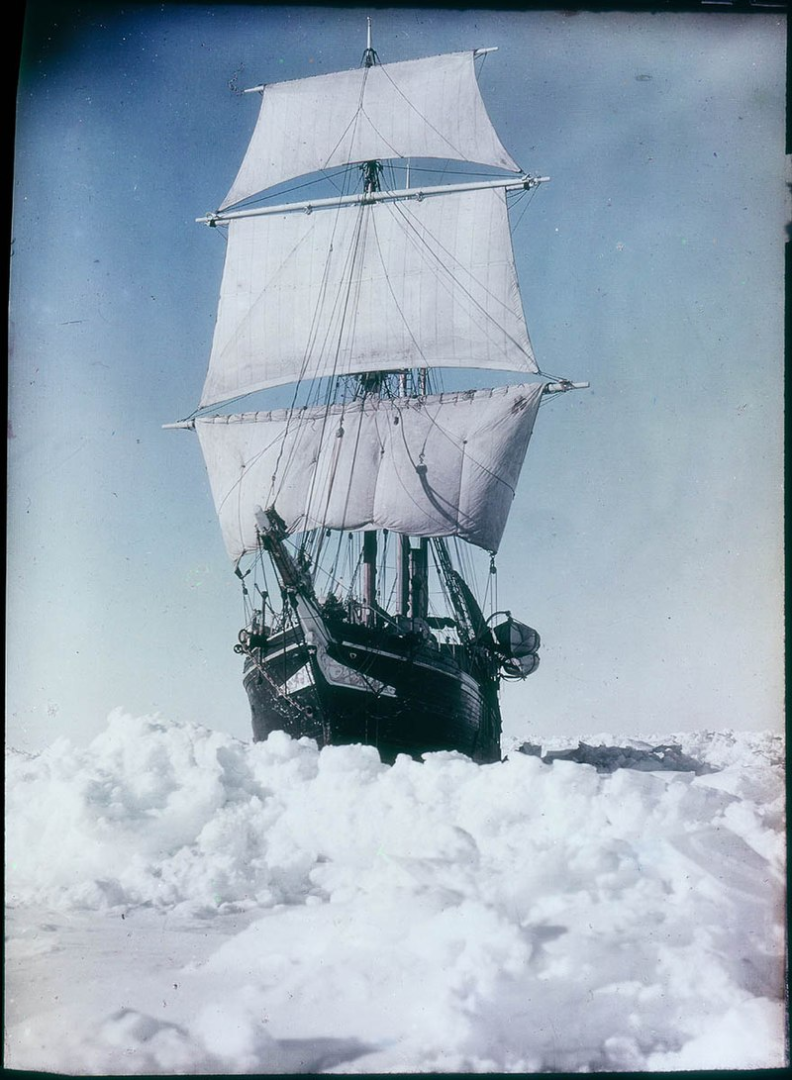
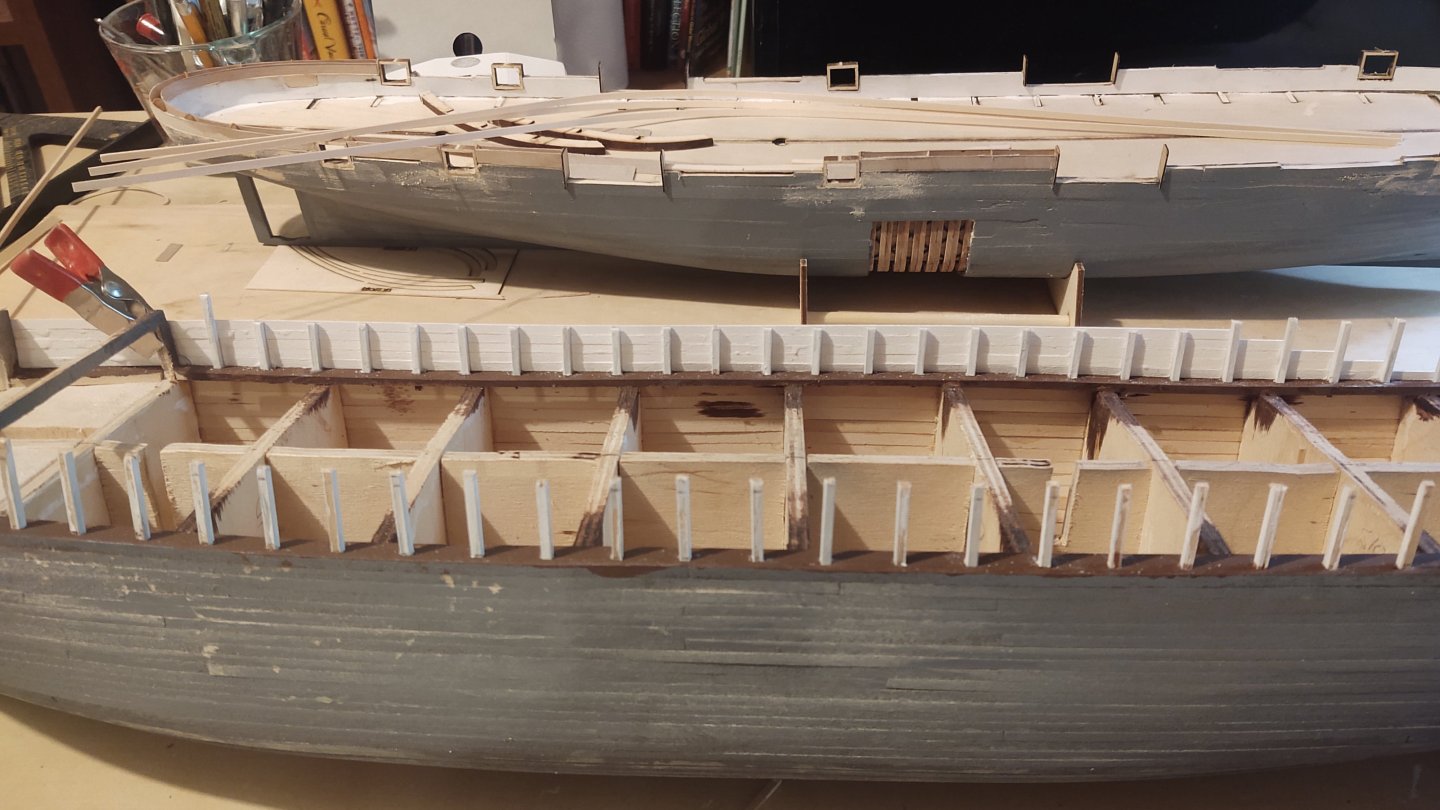
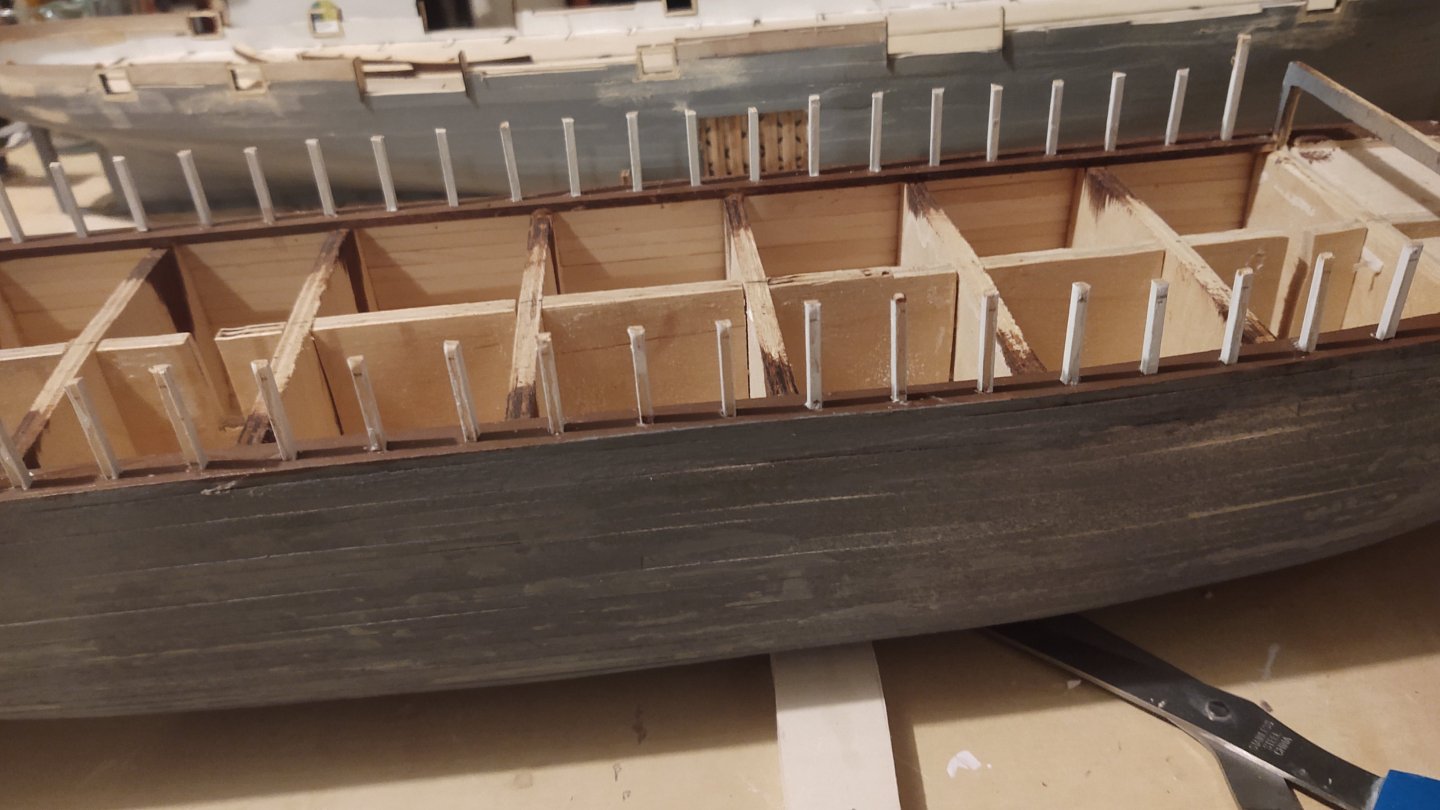
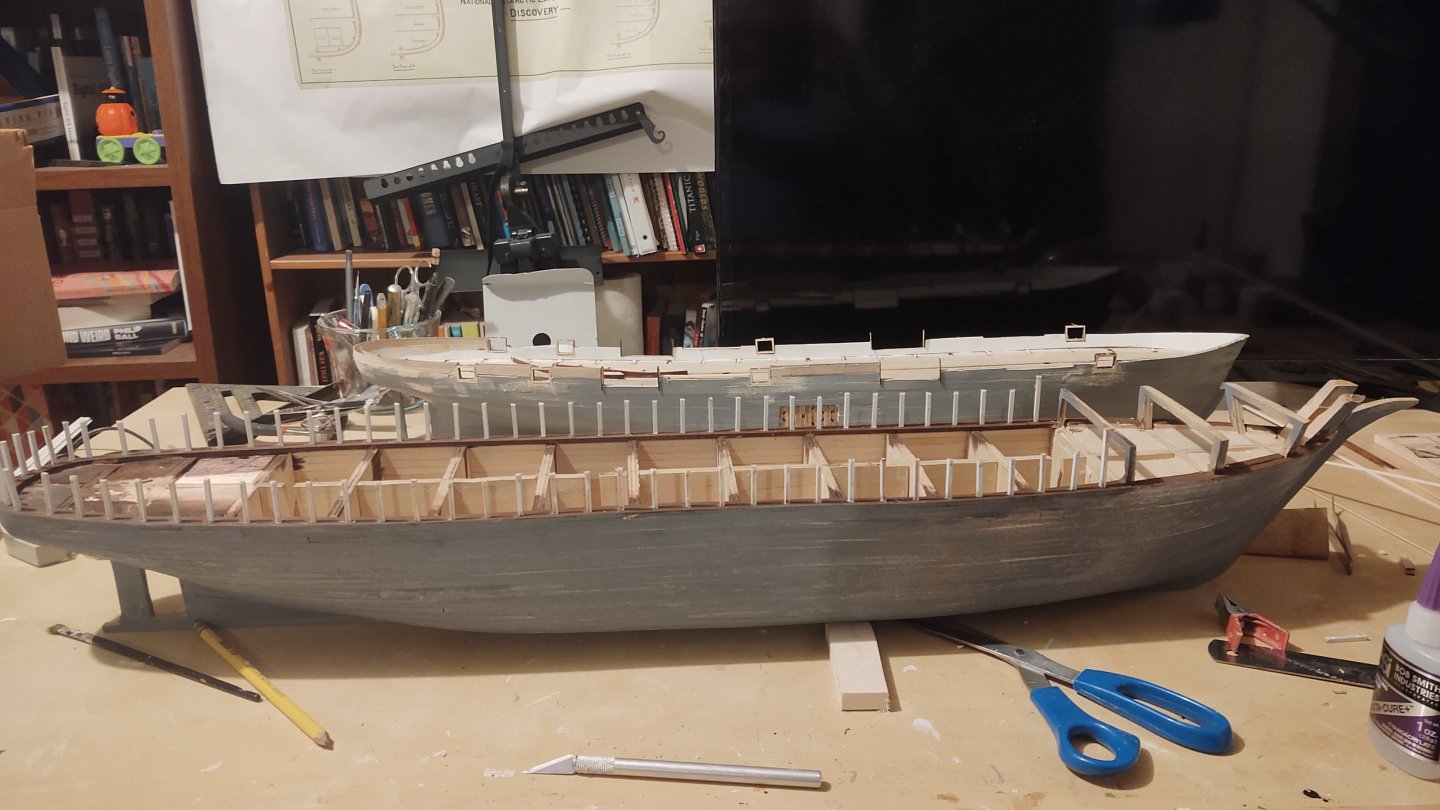
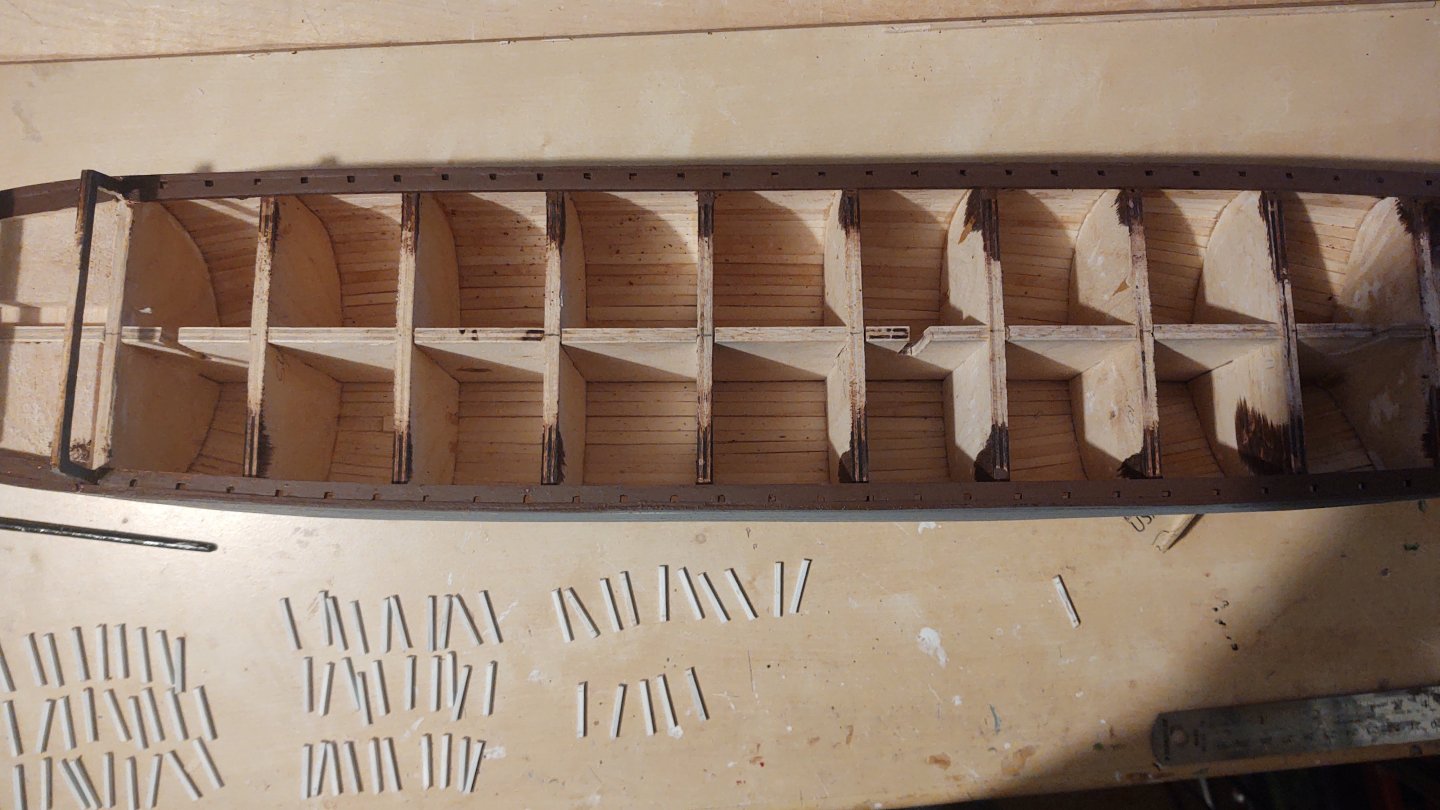
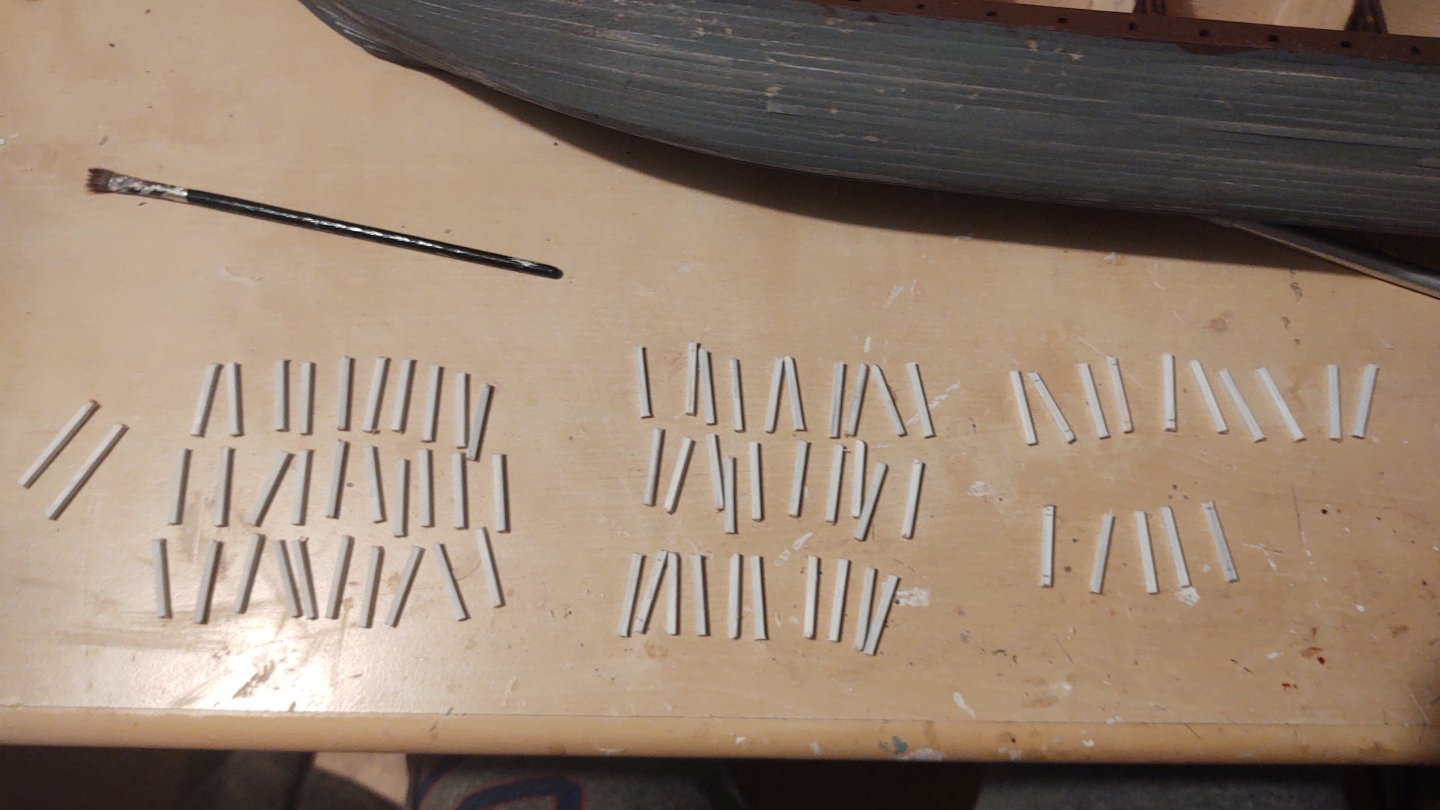
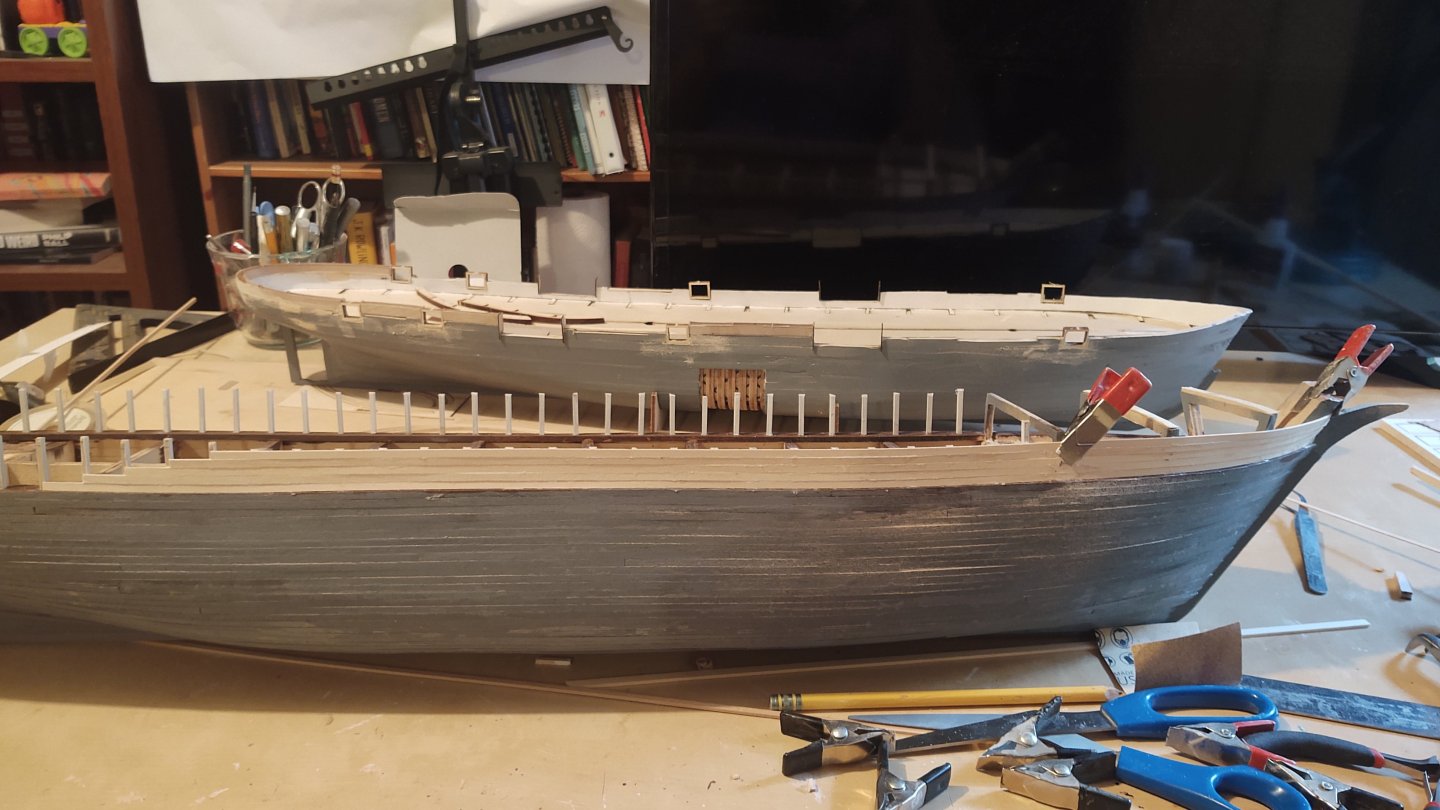
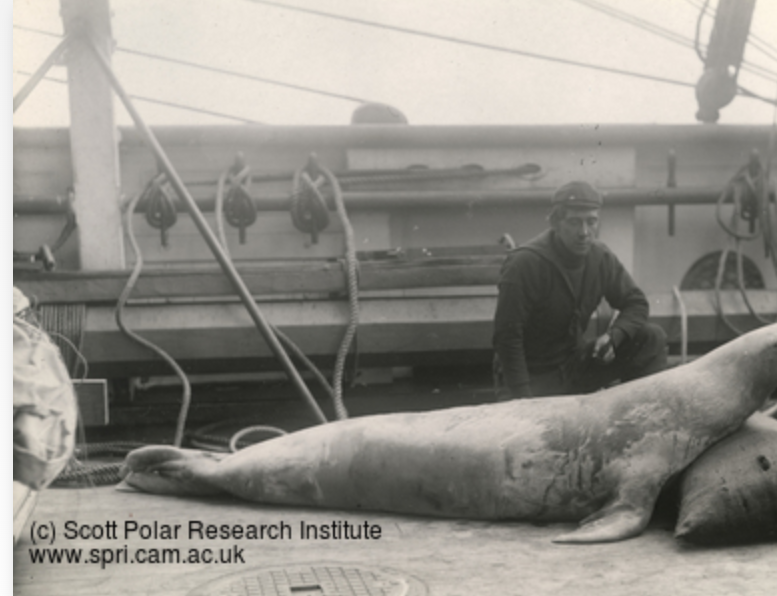
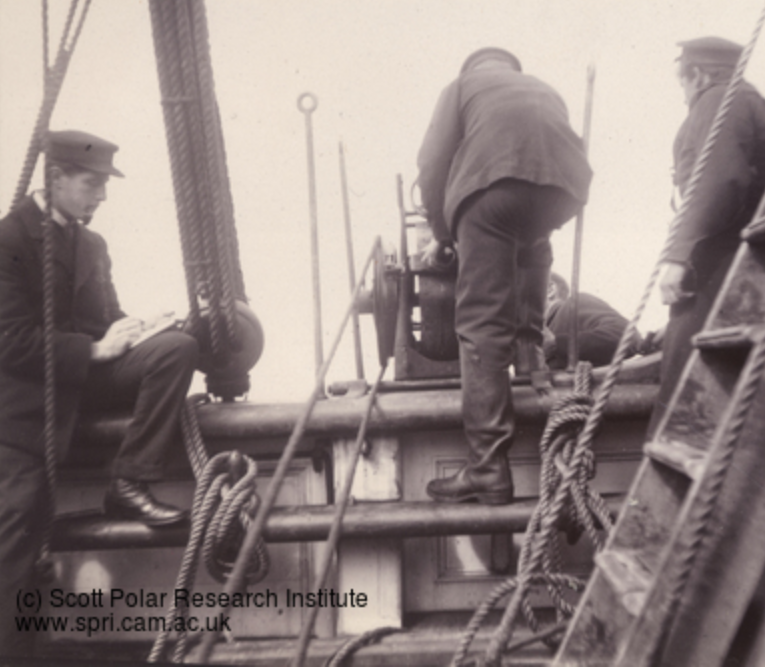
.thumb.jpg.1f40727f9fc34c0fd0957de40c6eaa3c.jpg)

